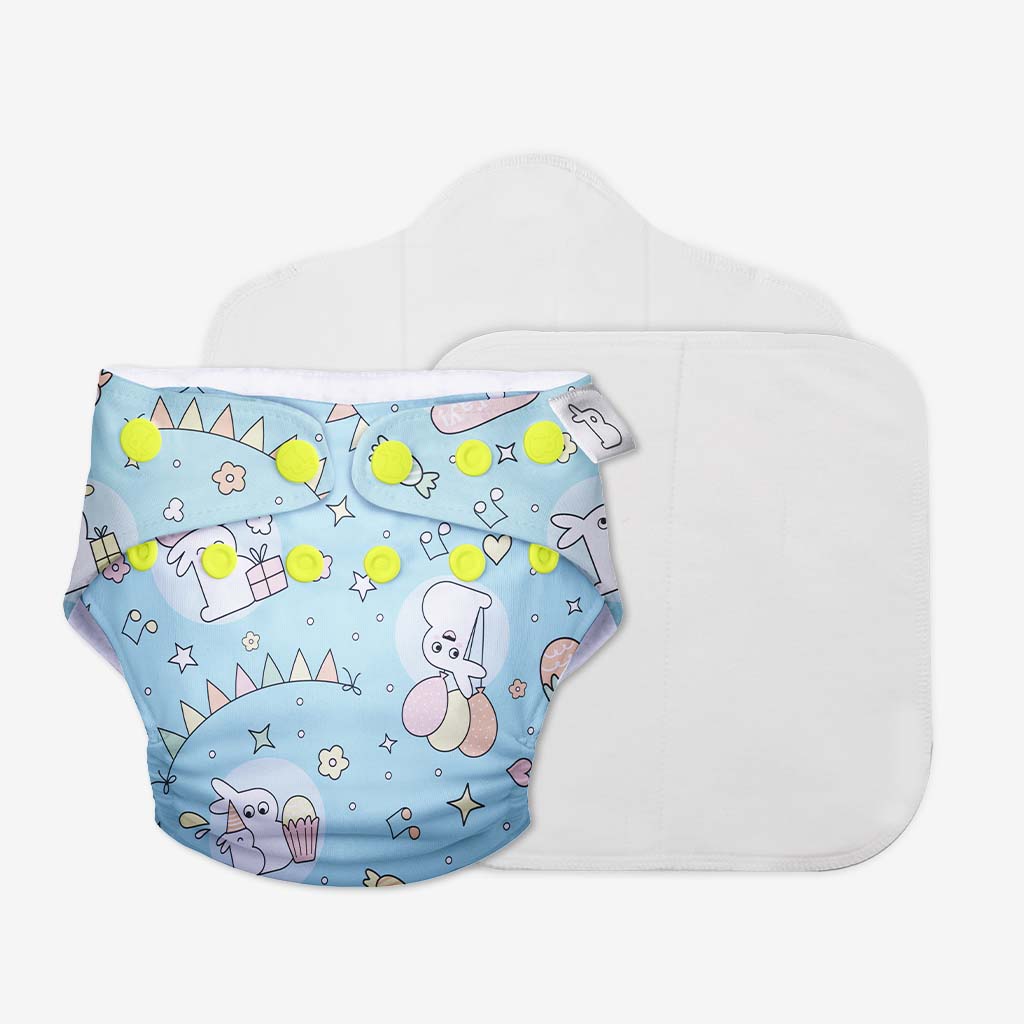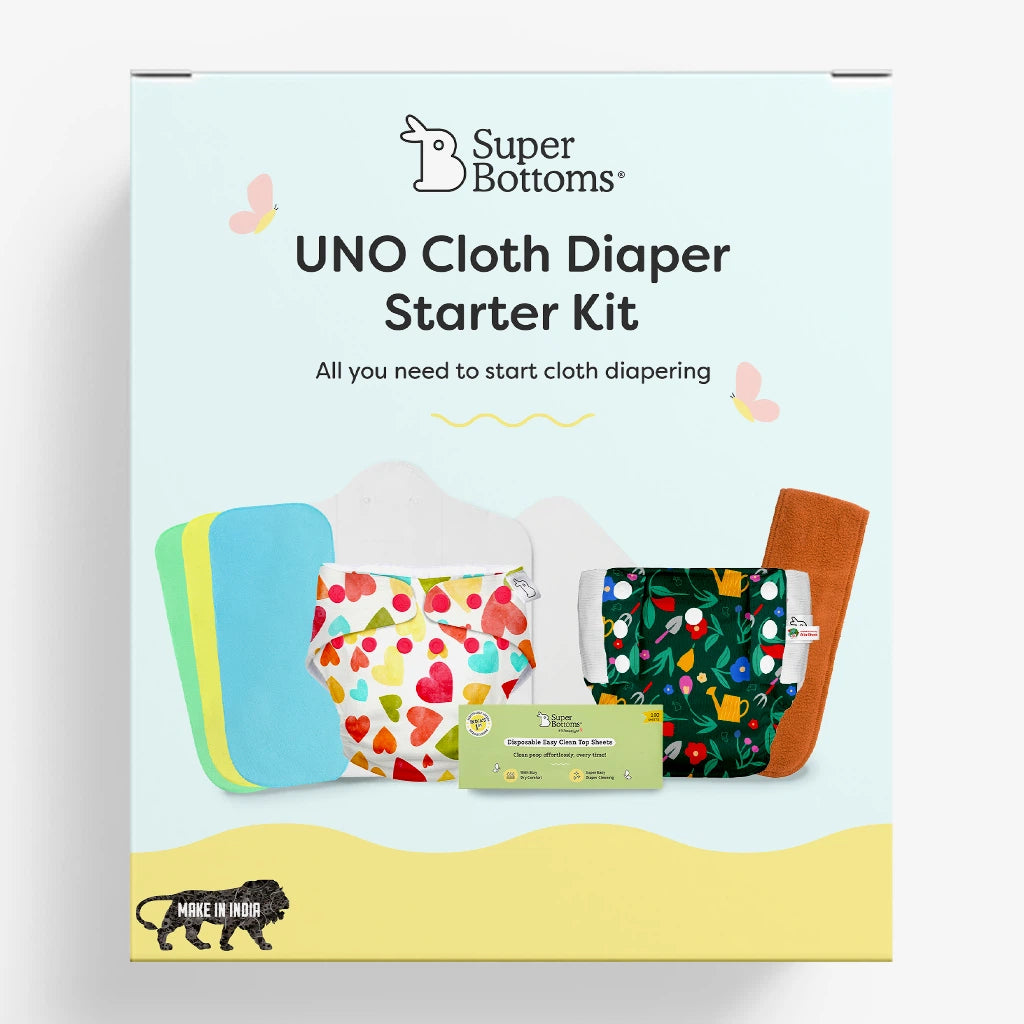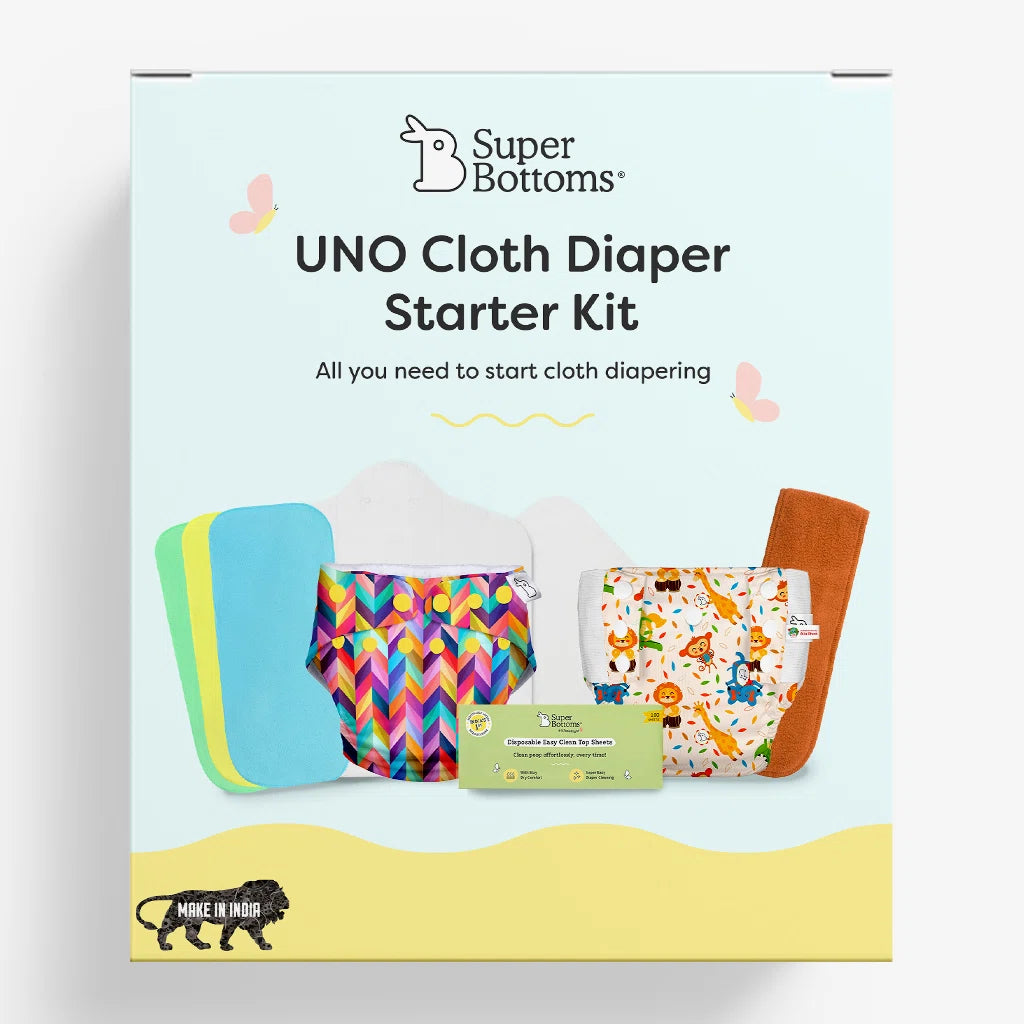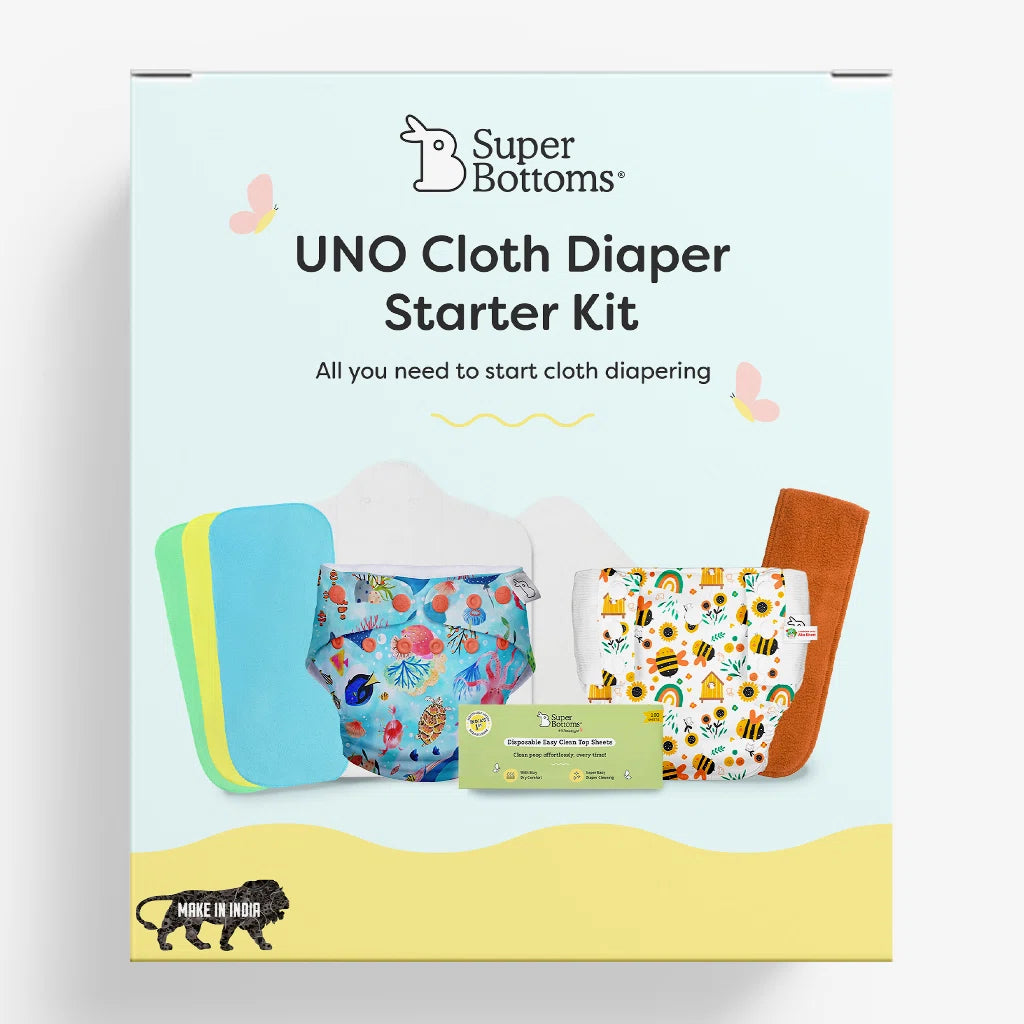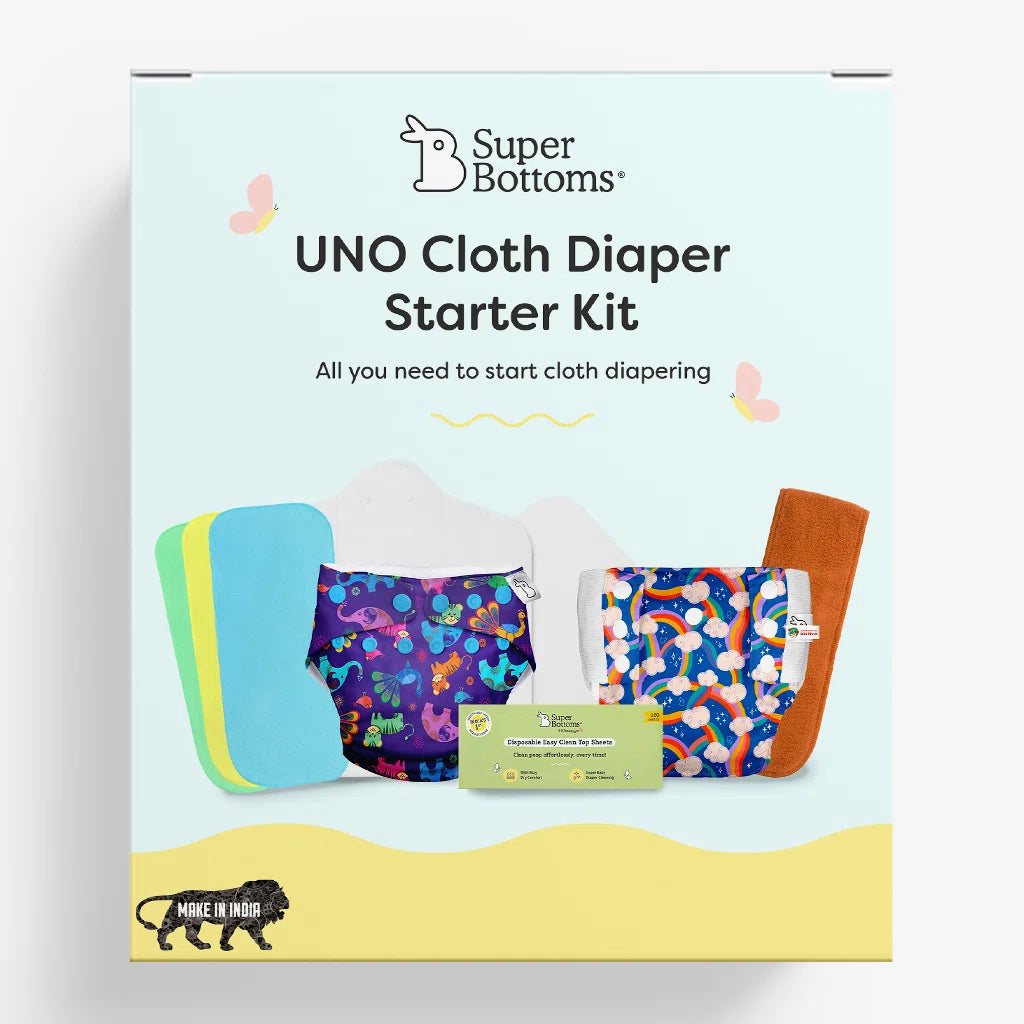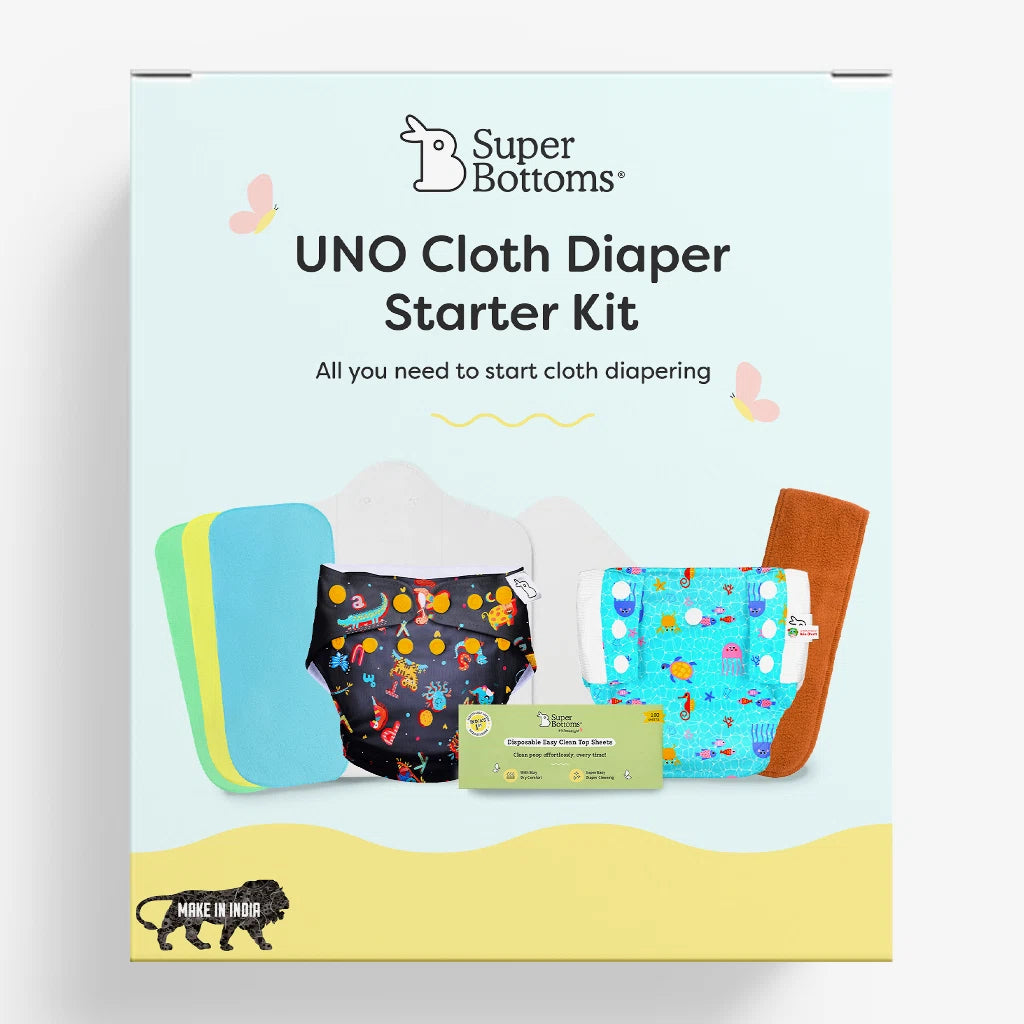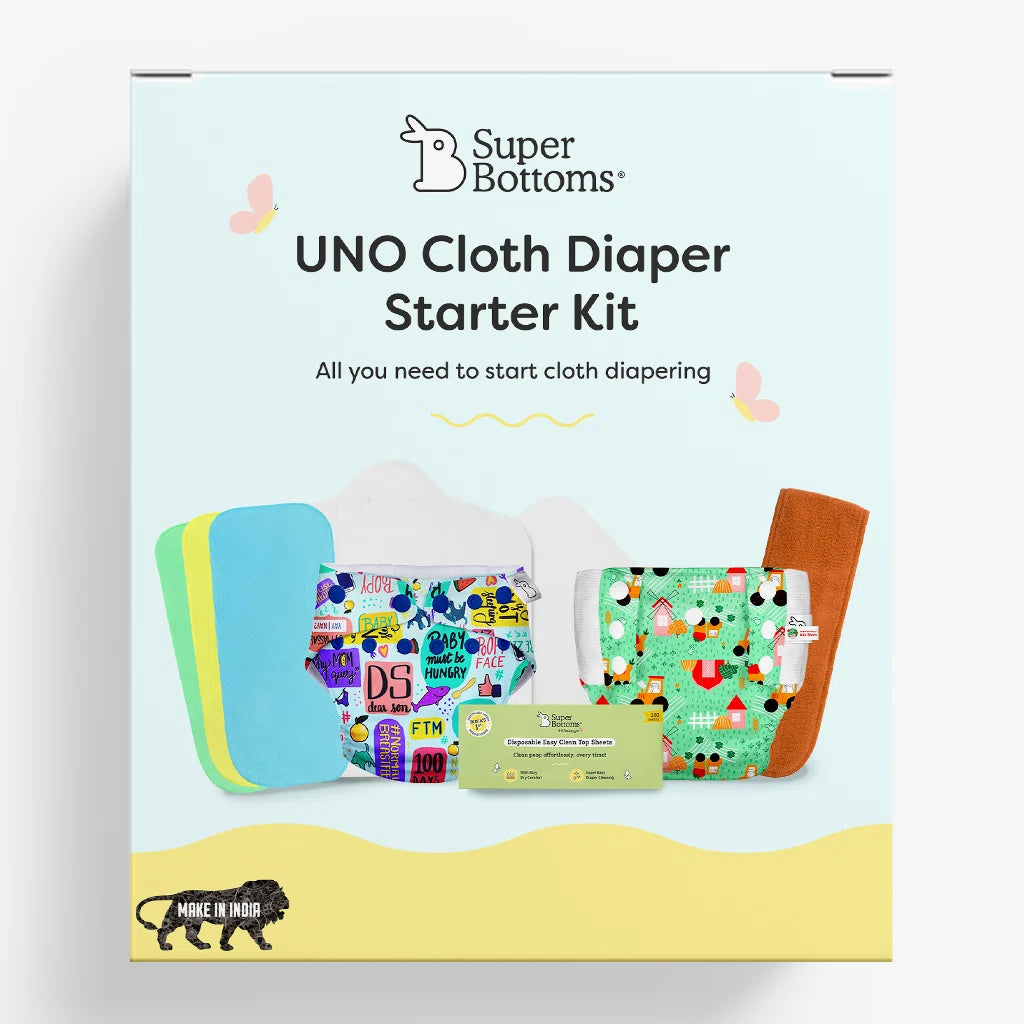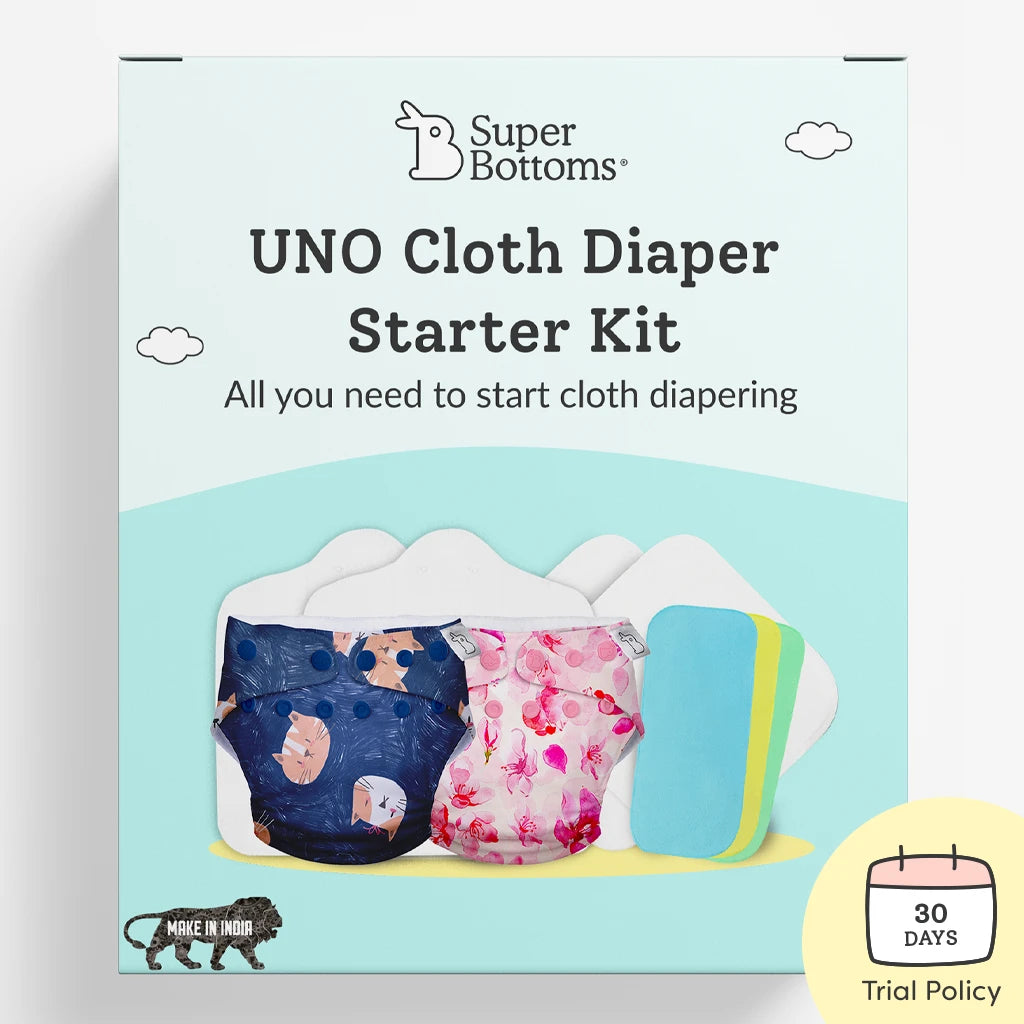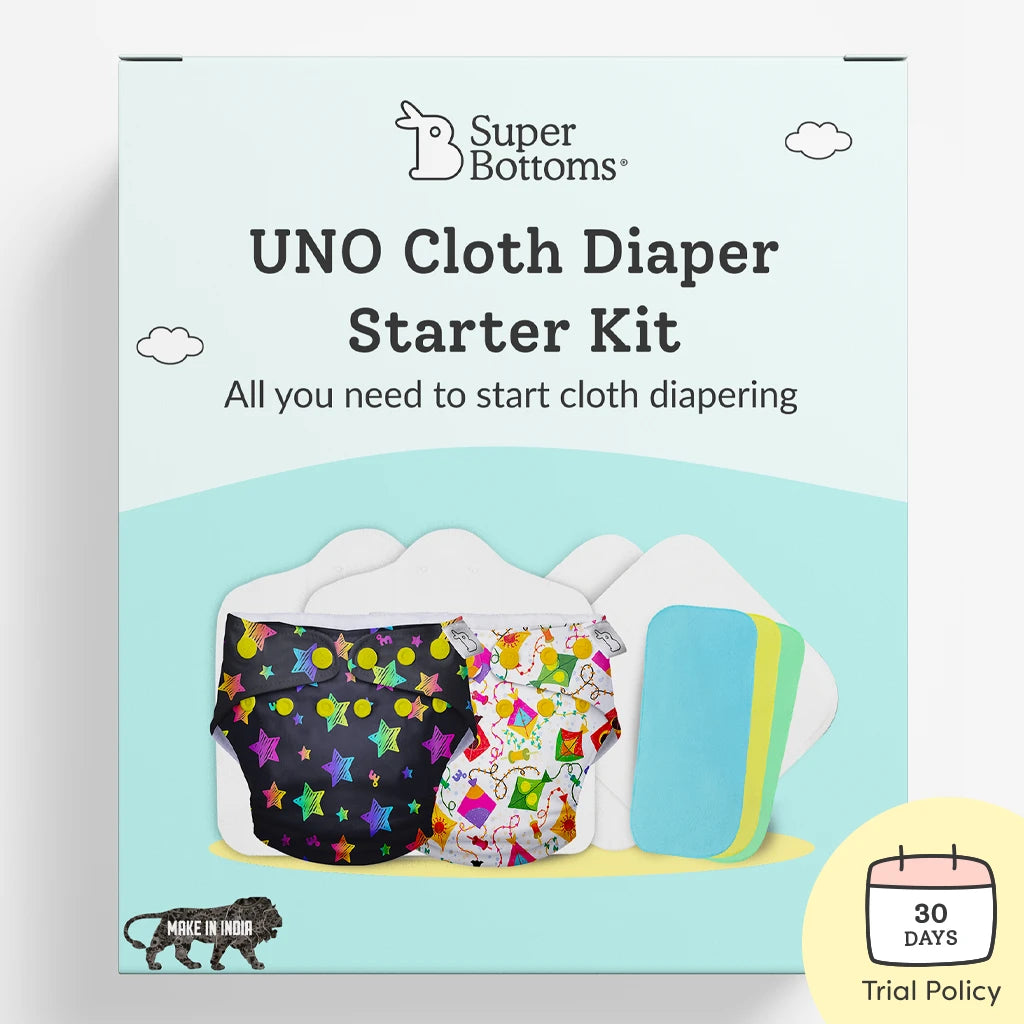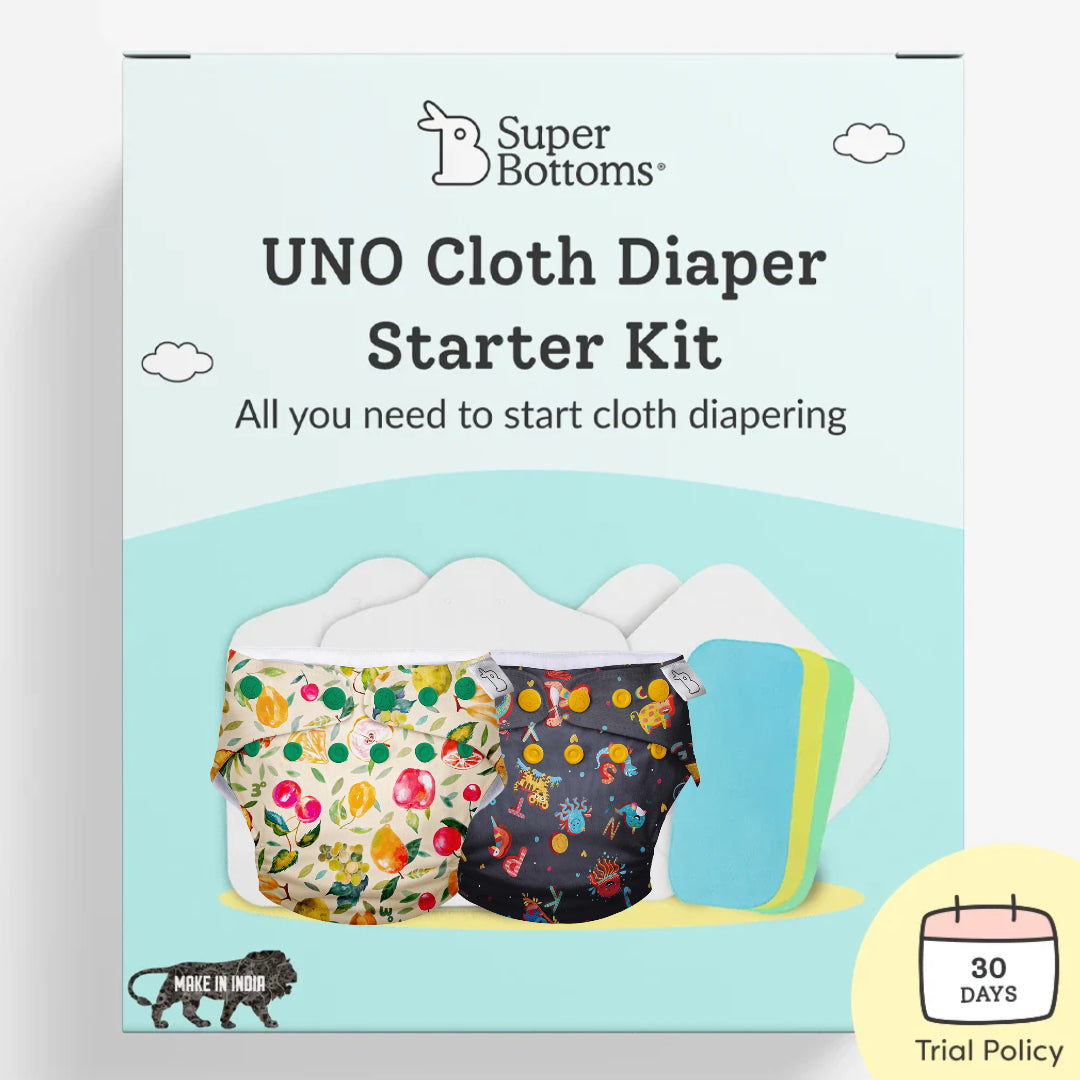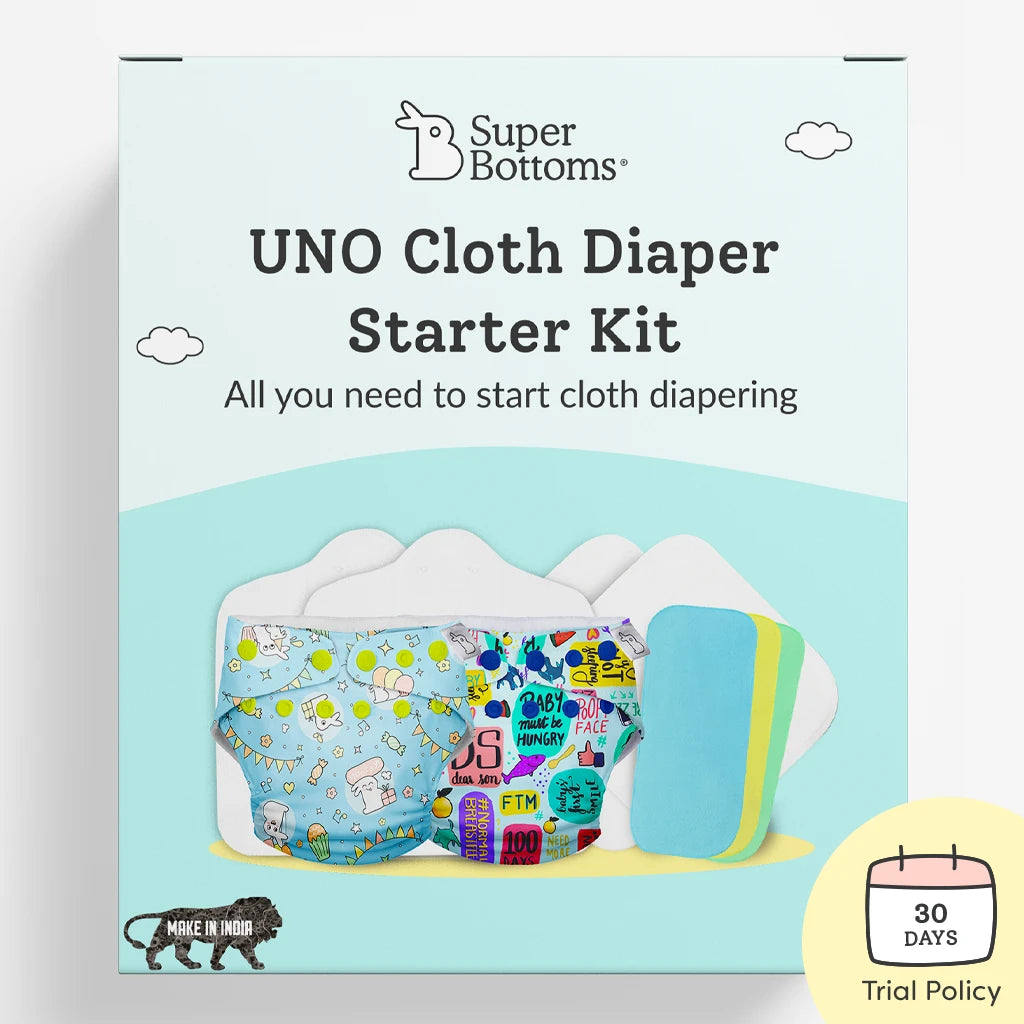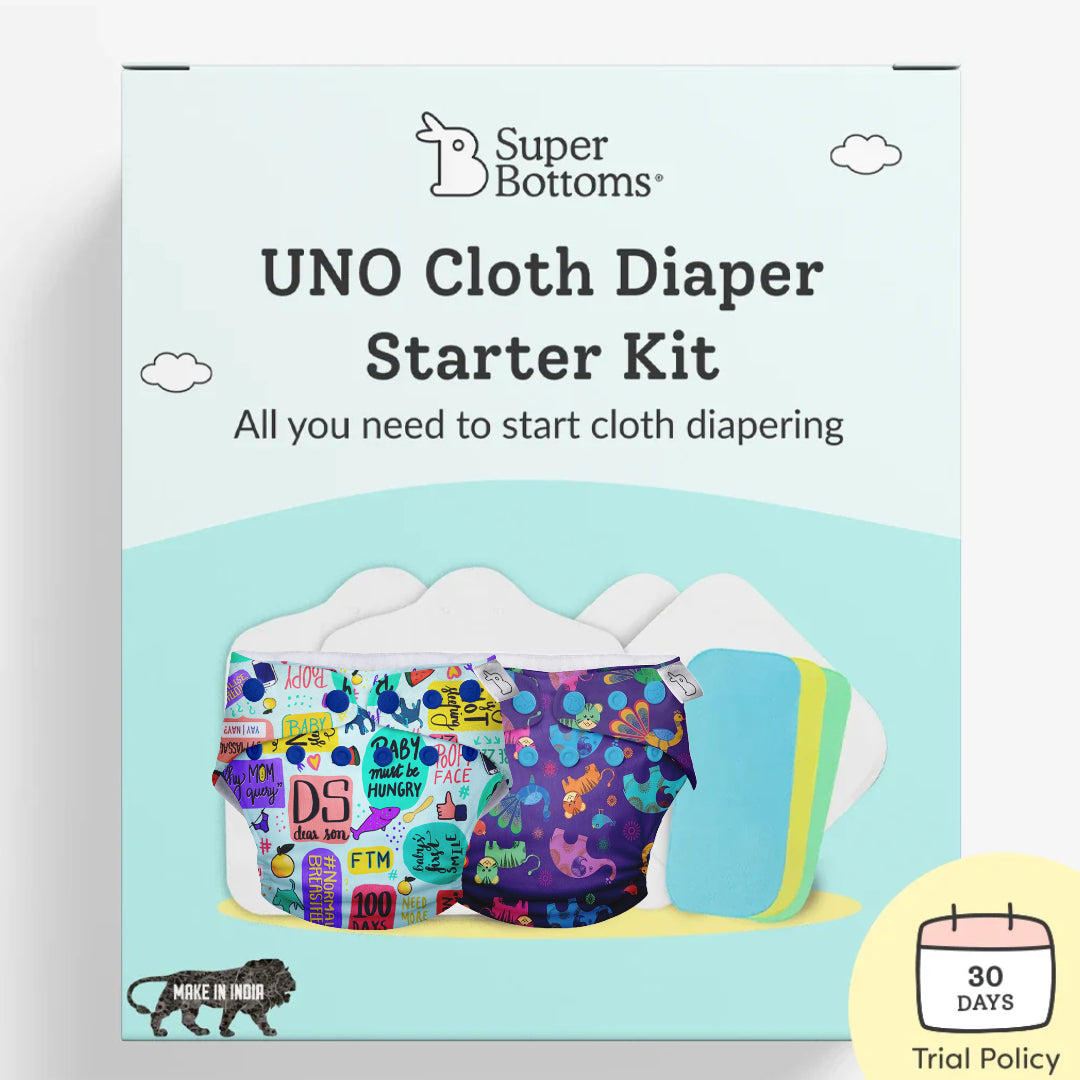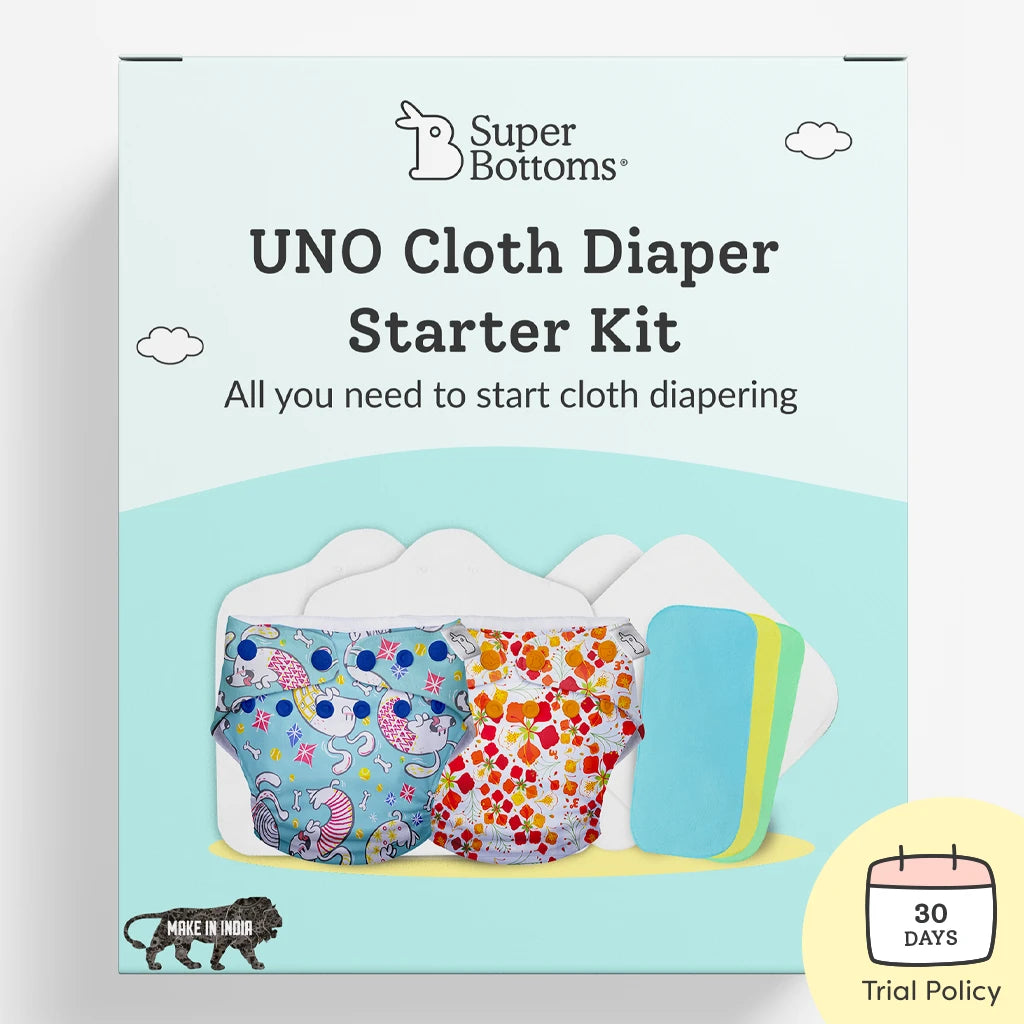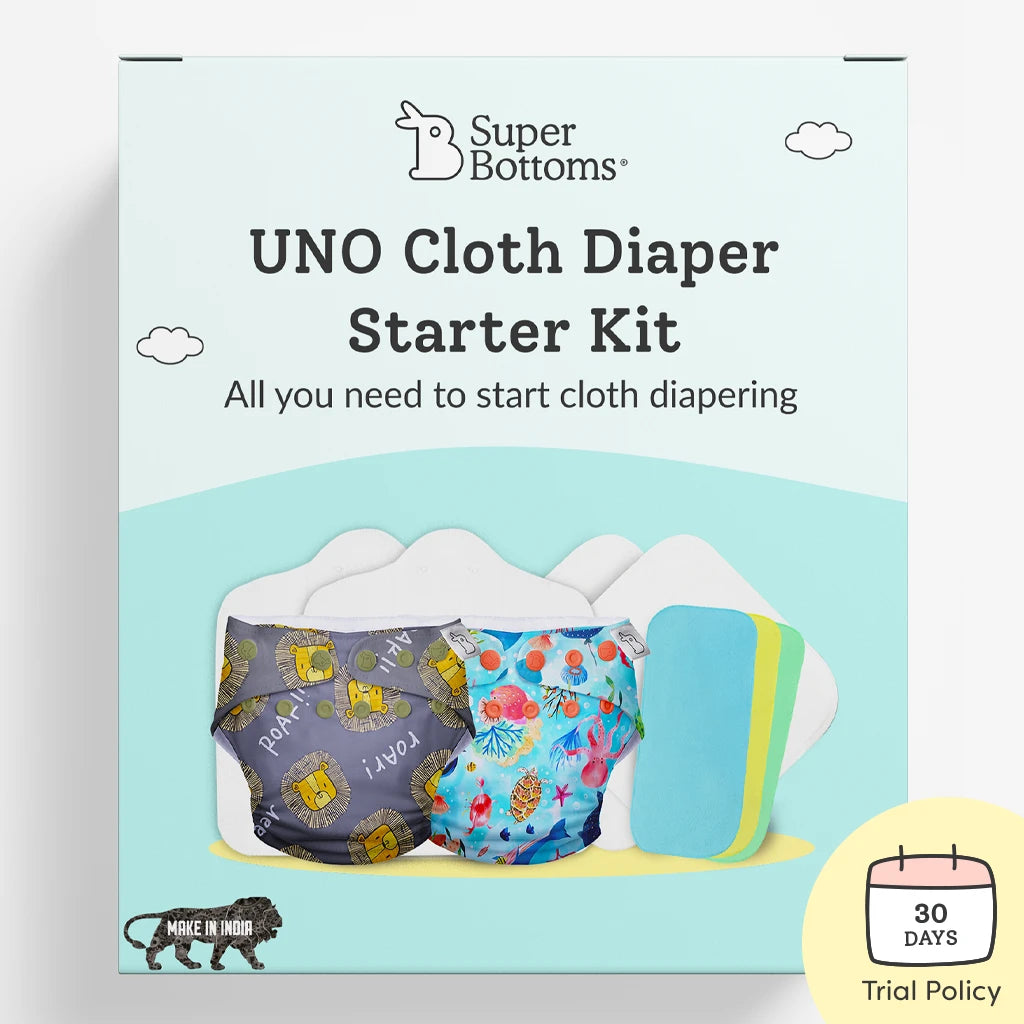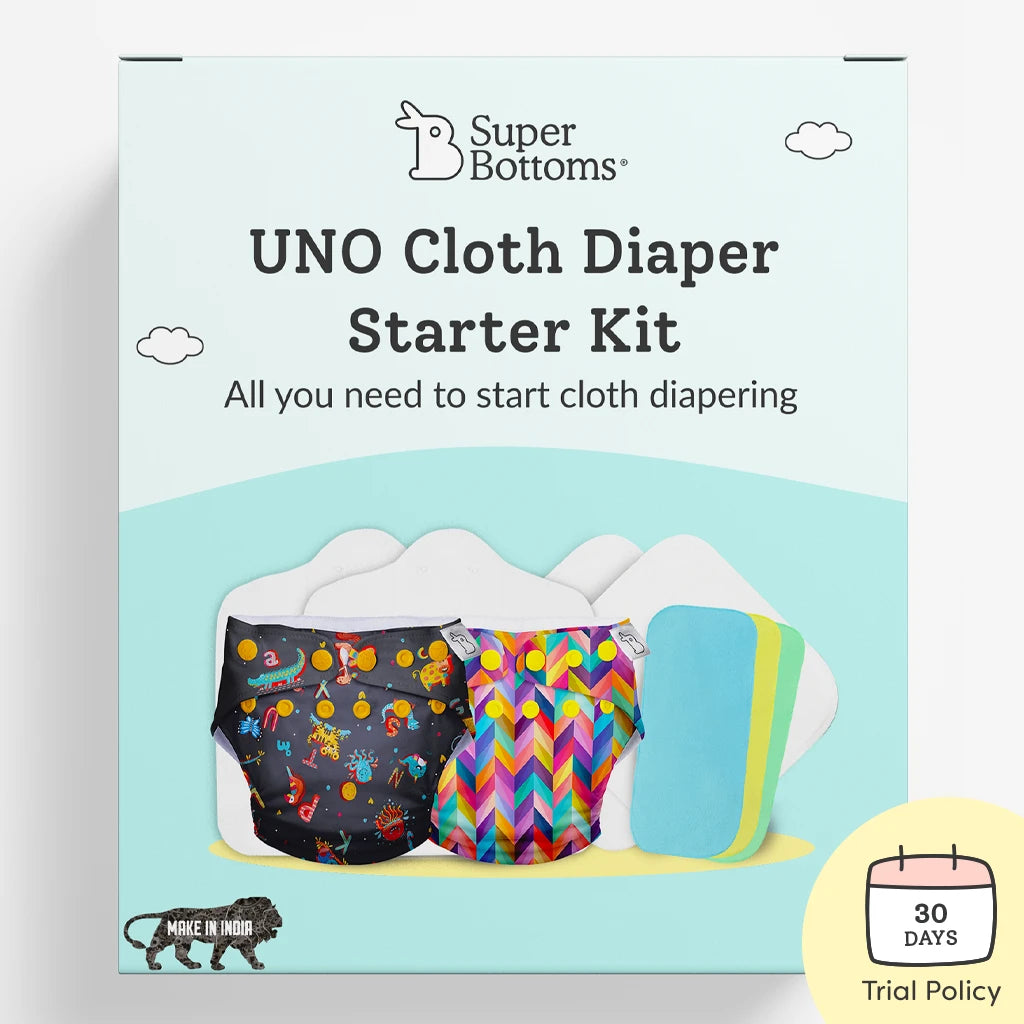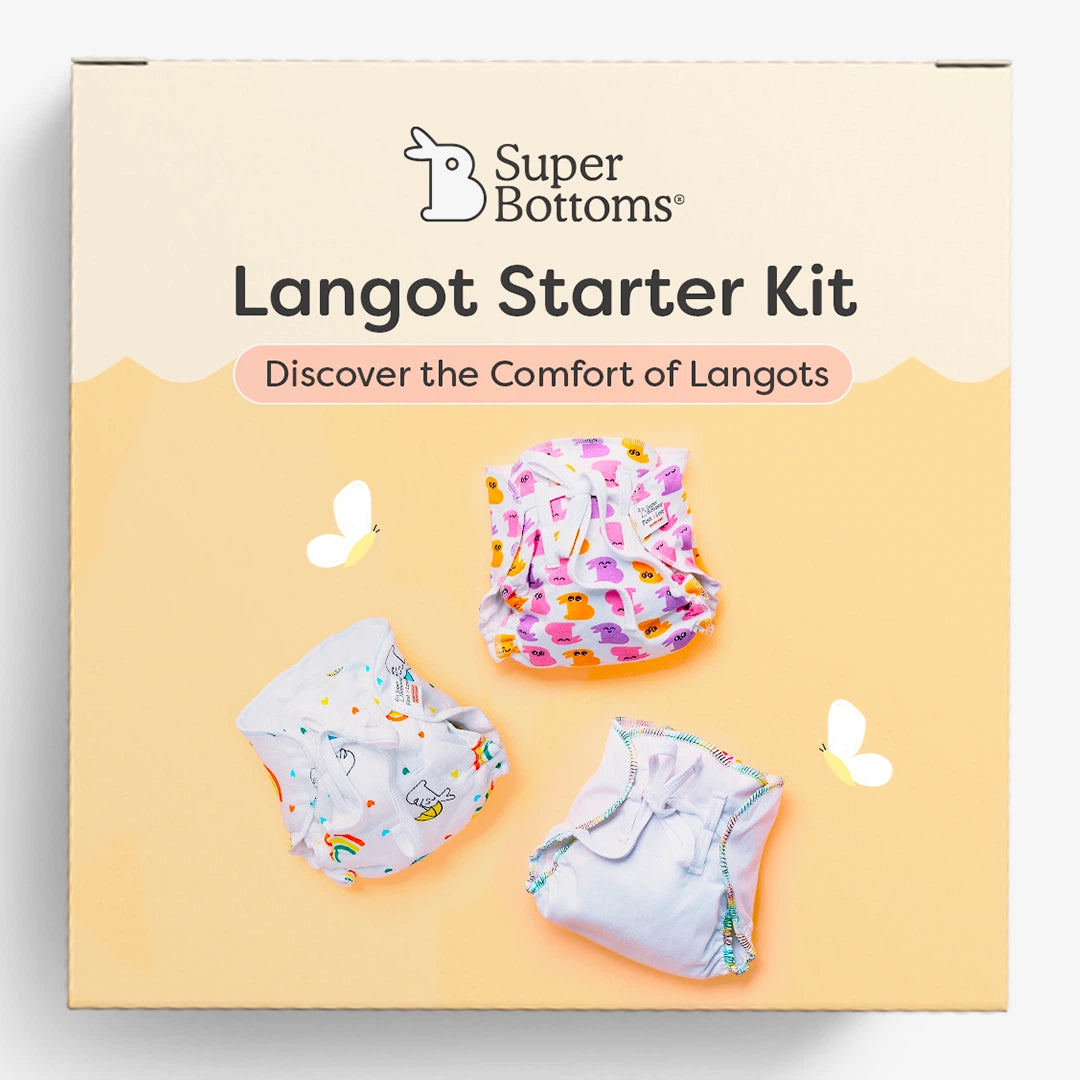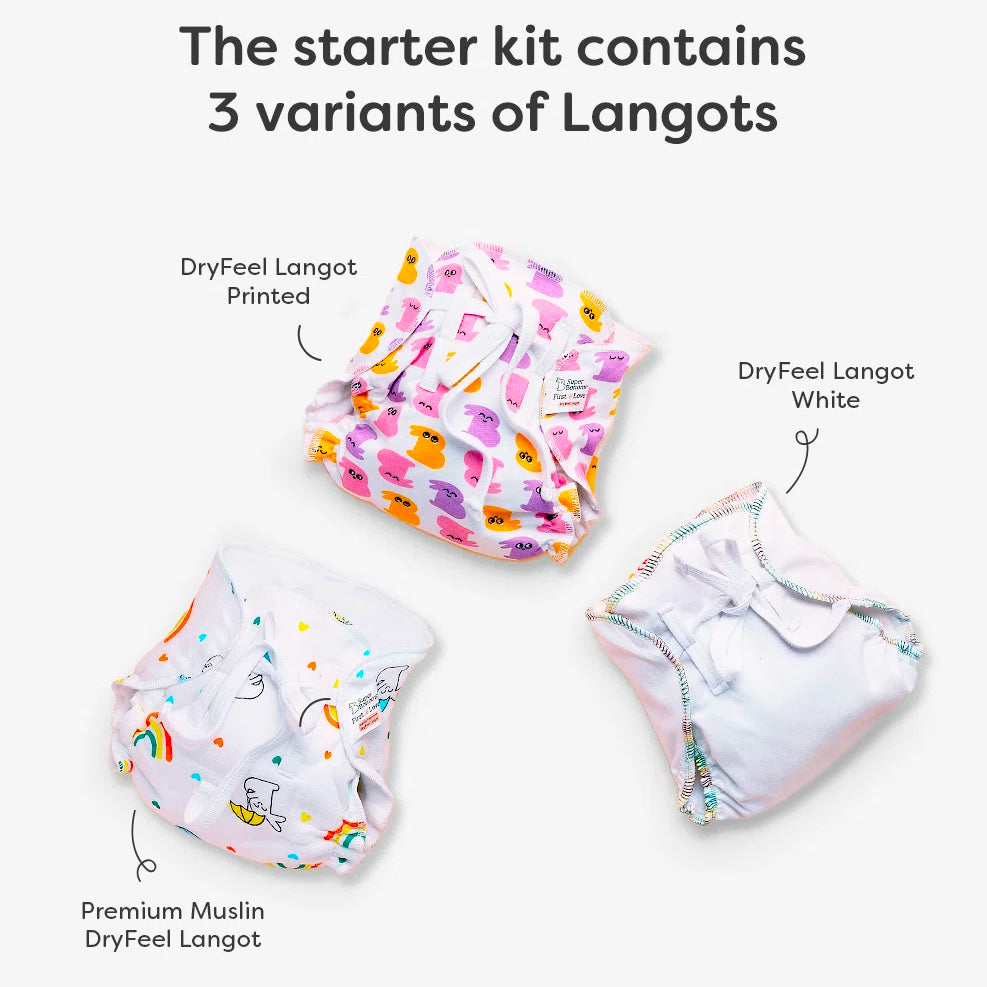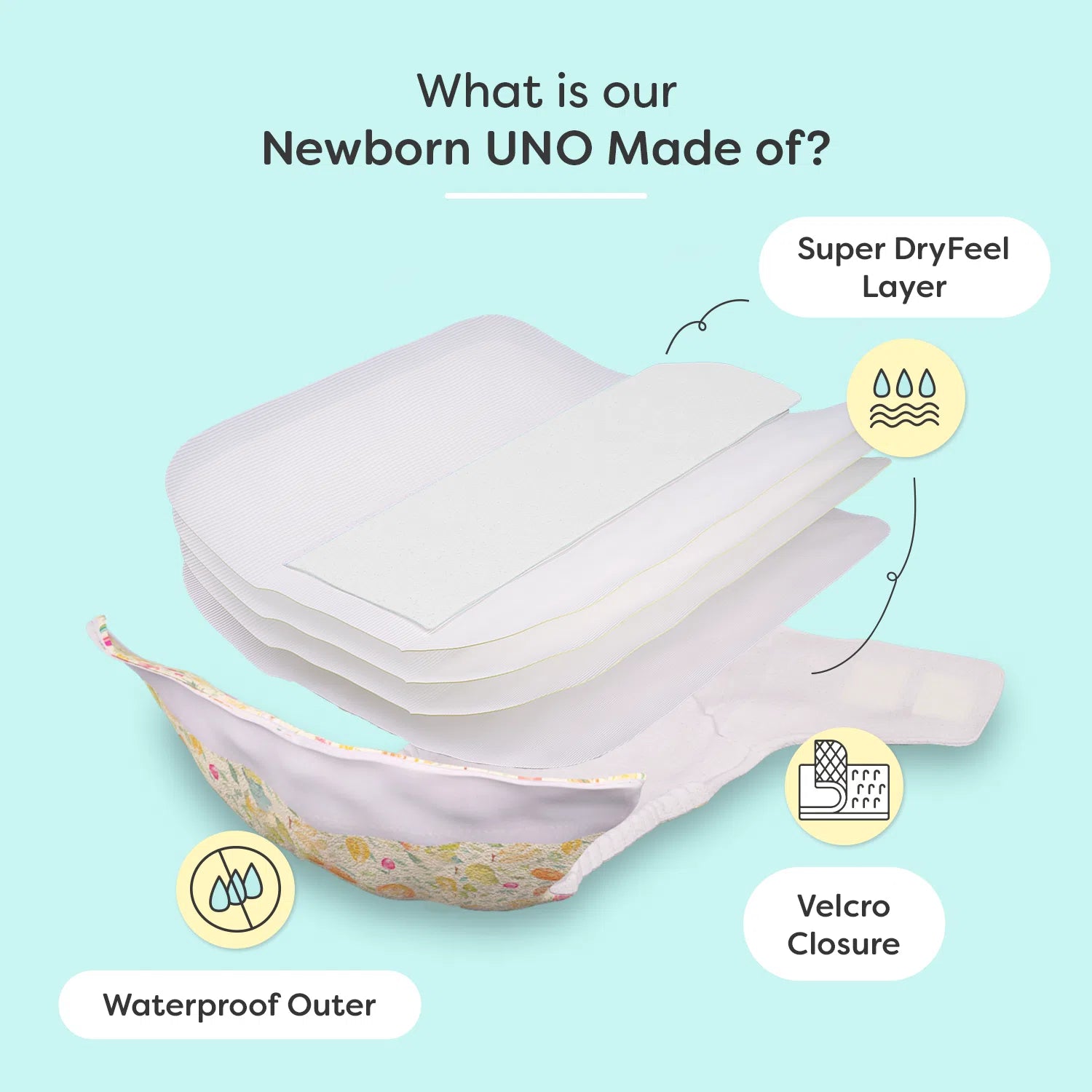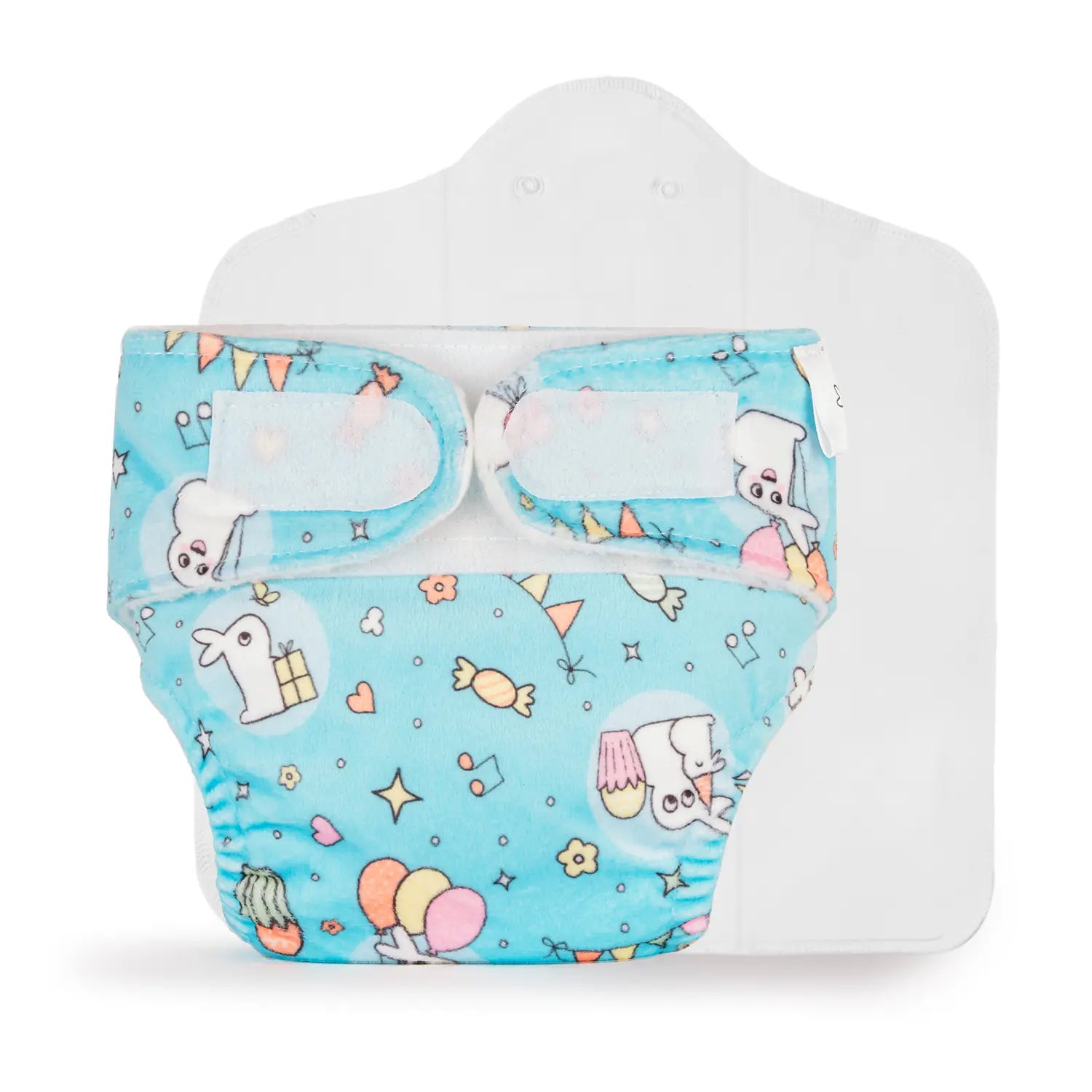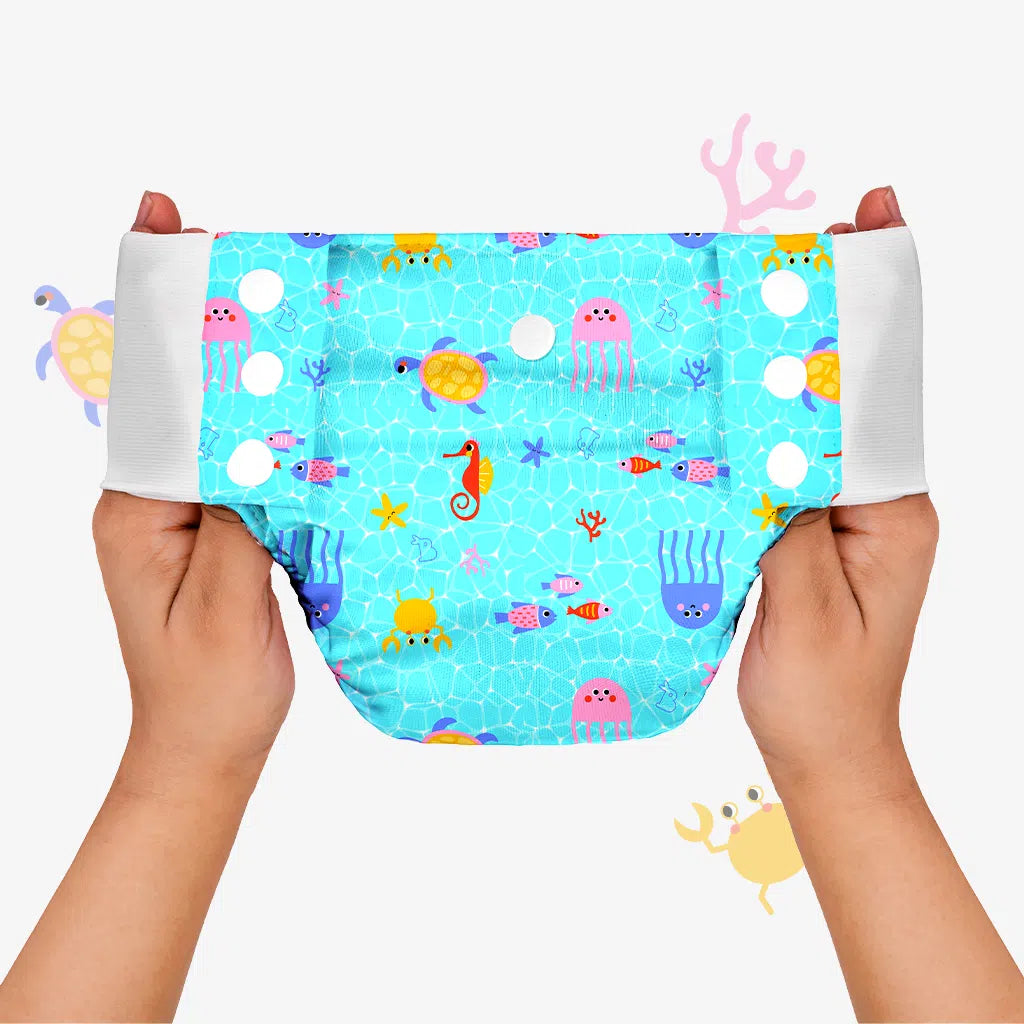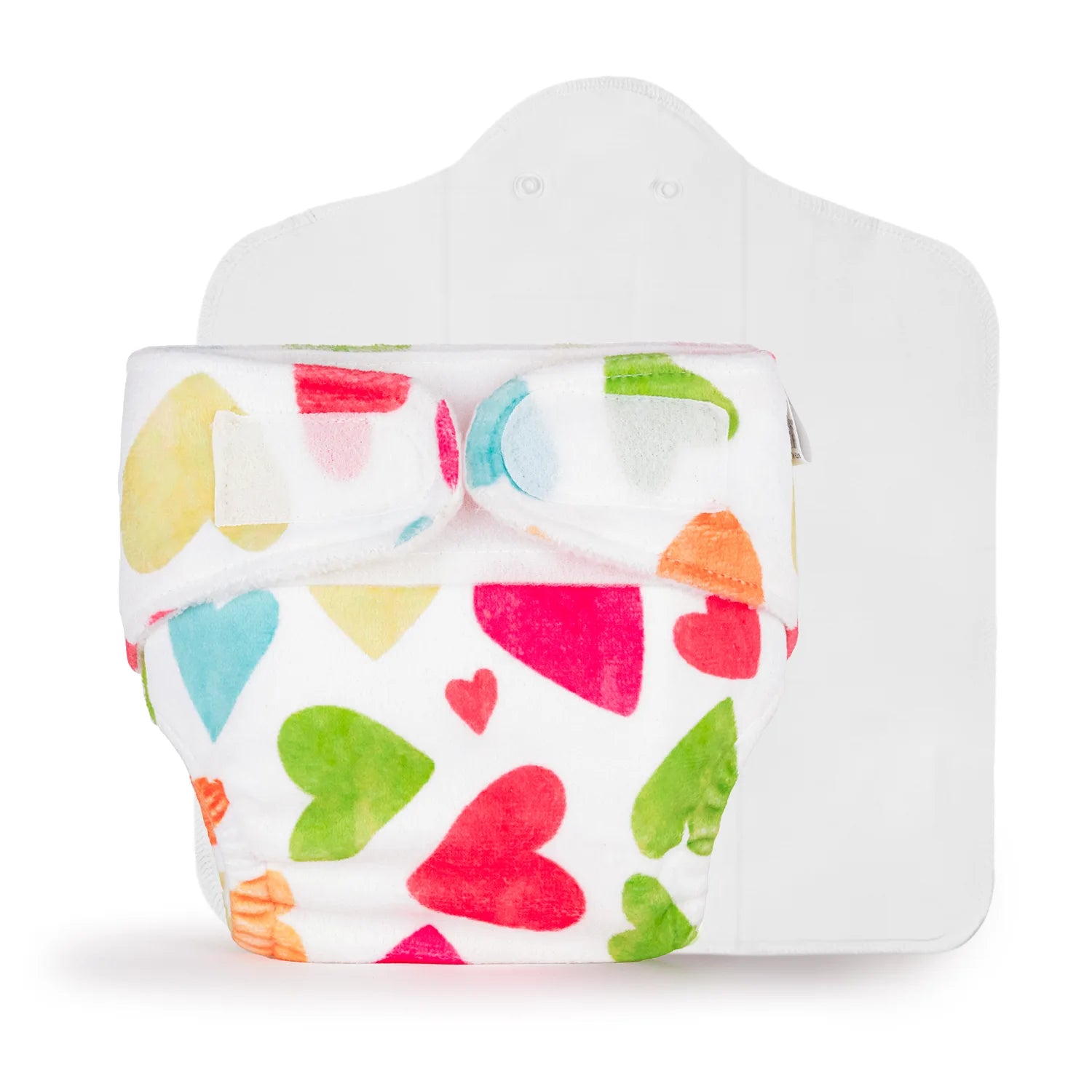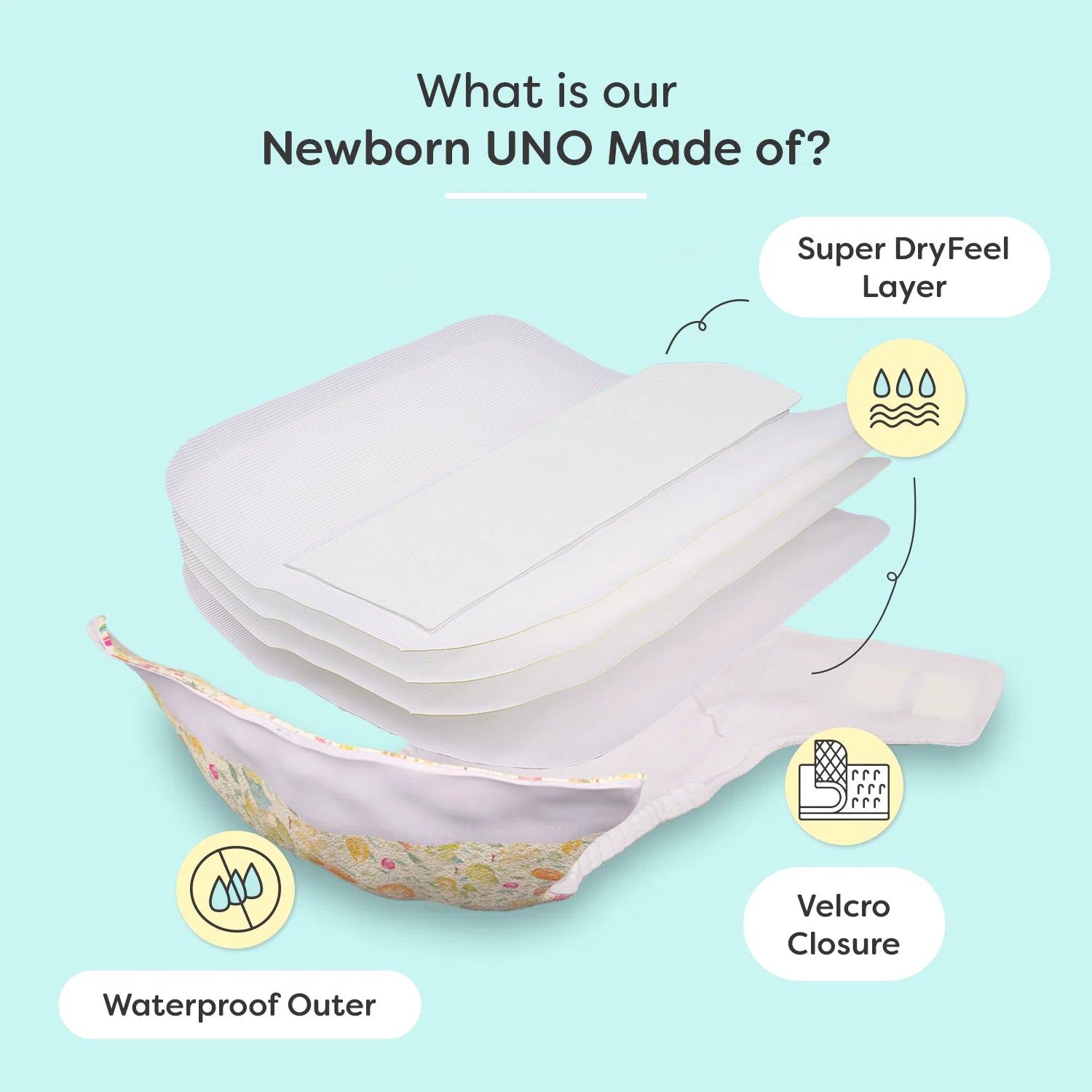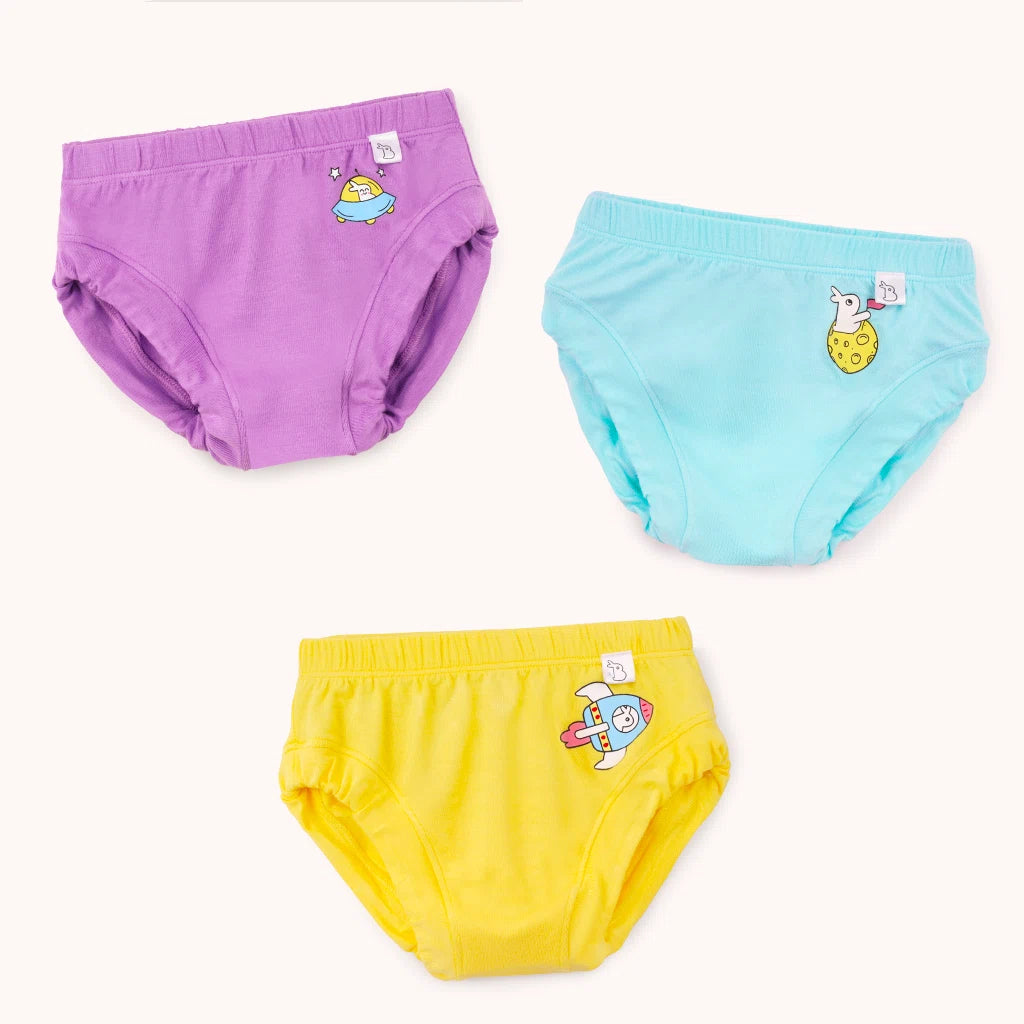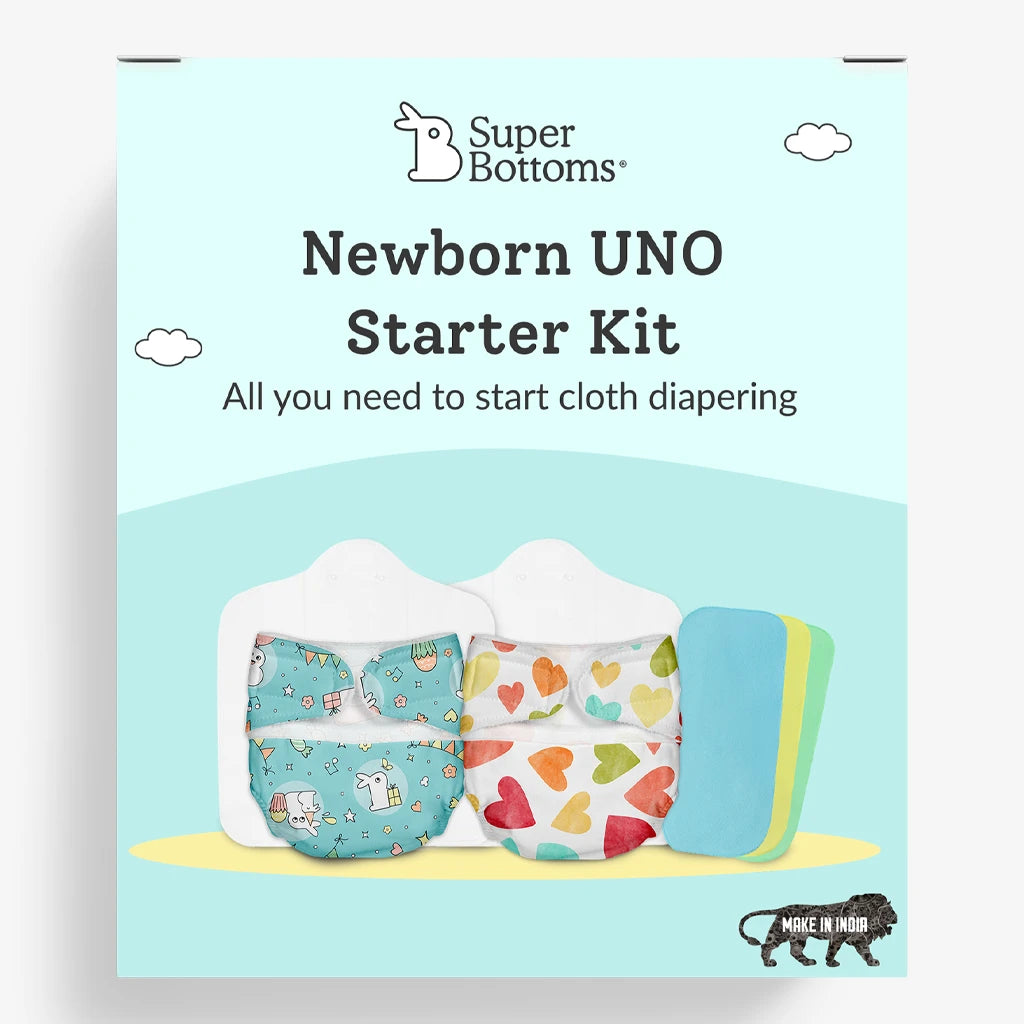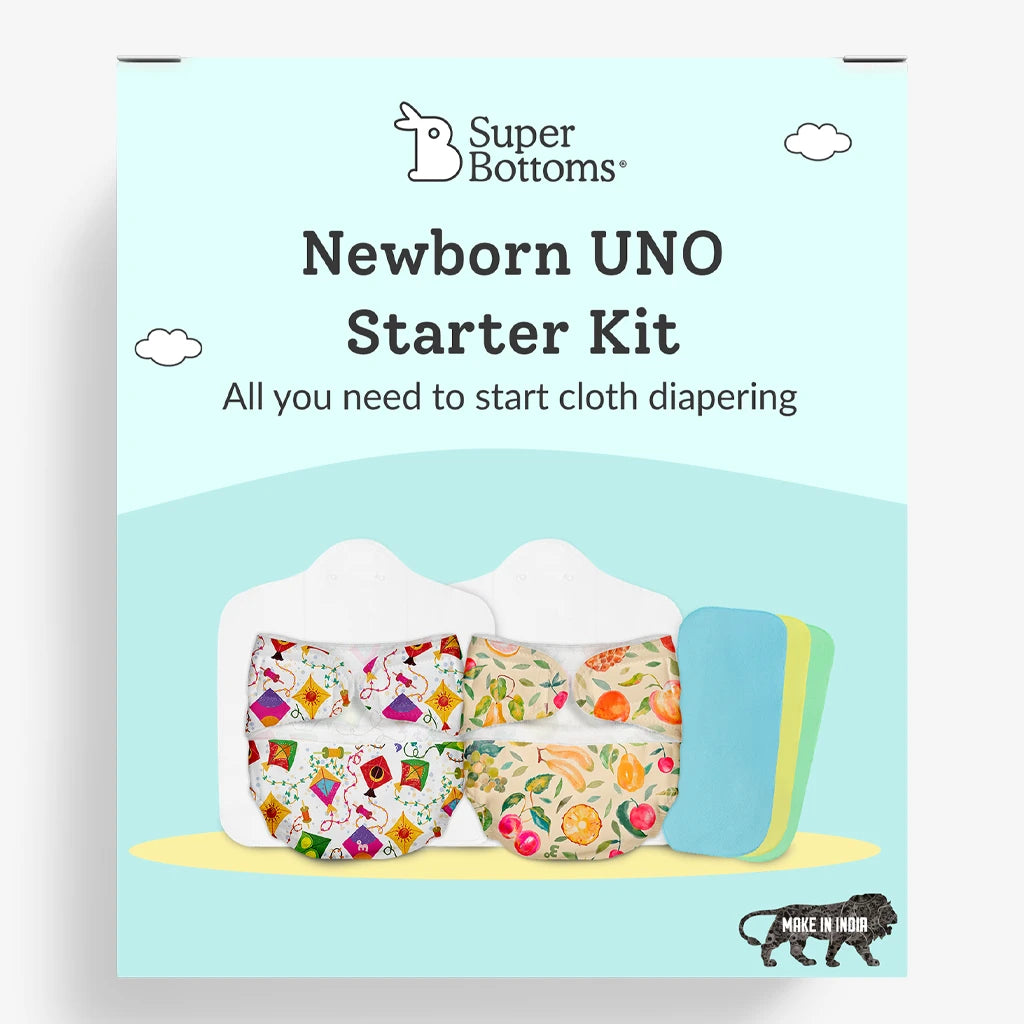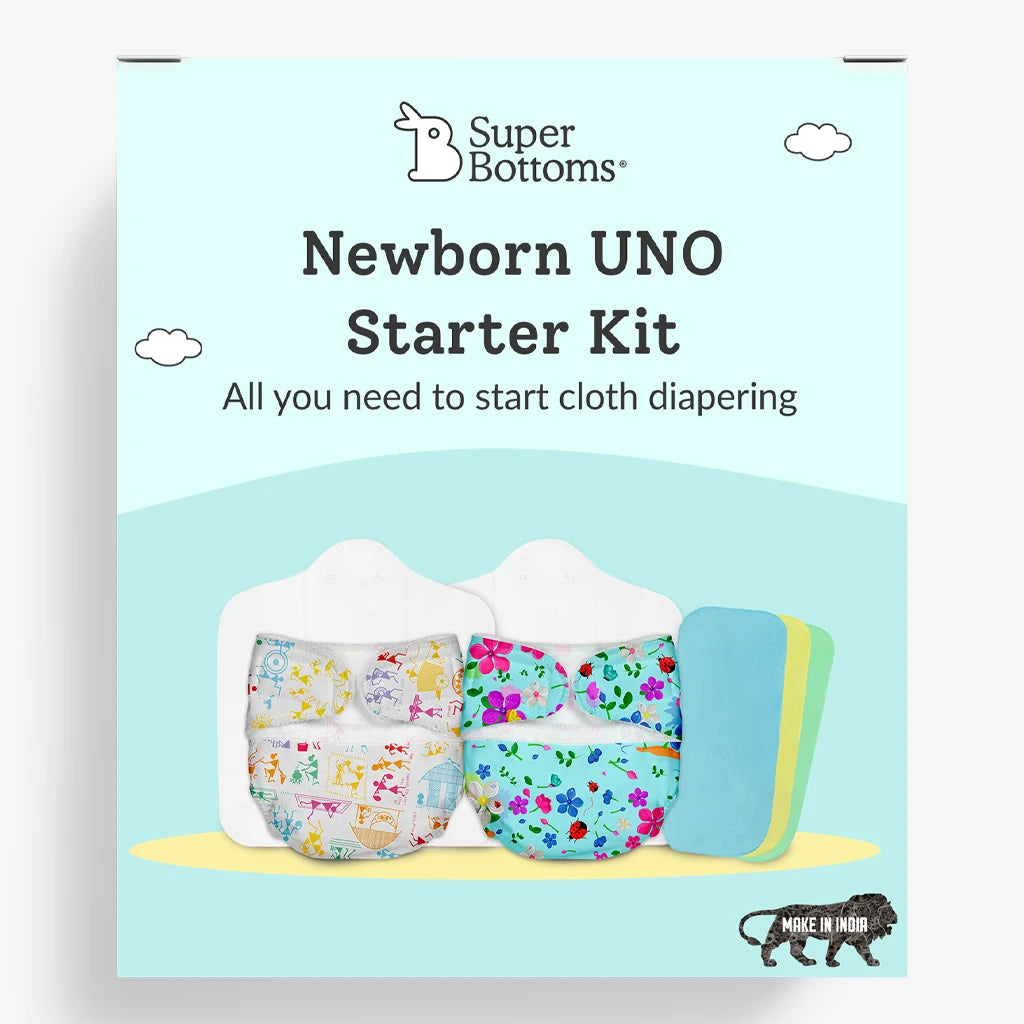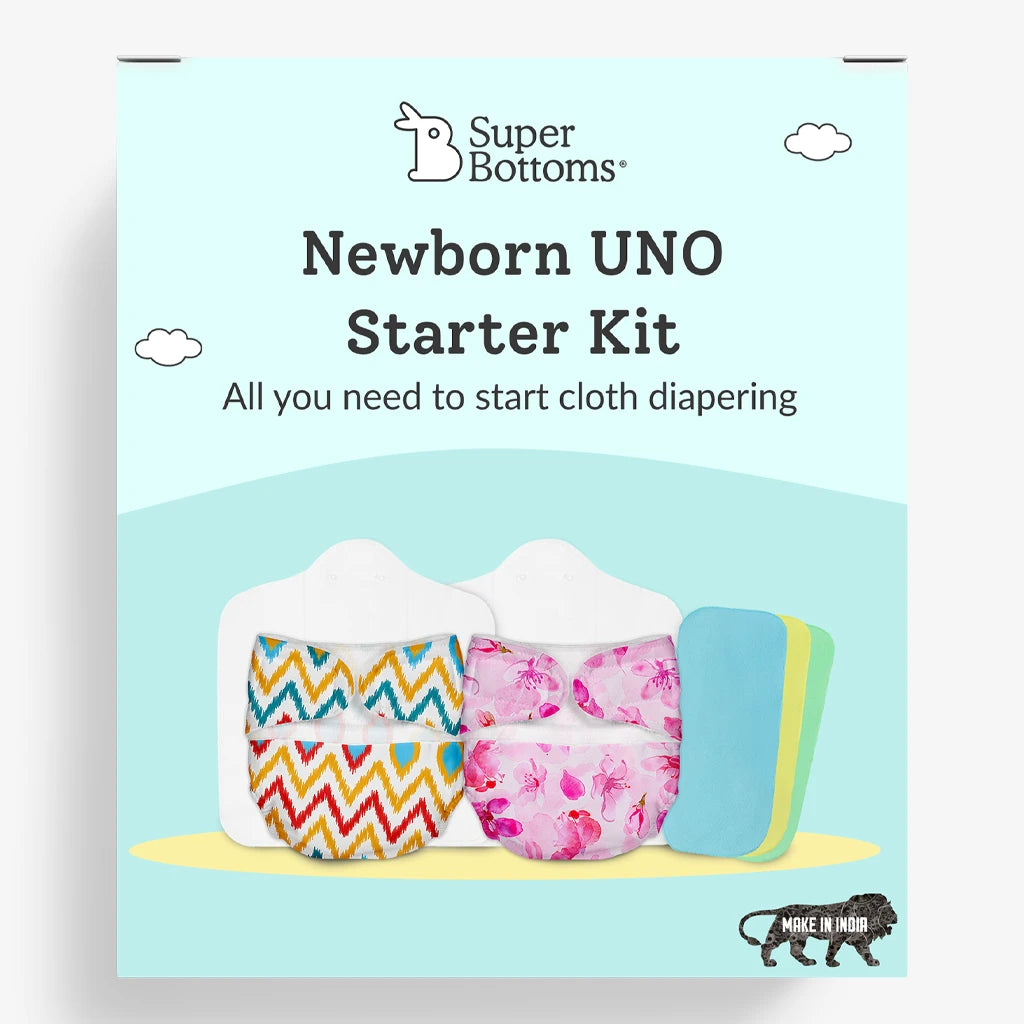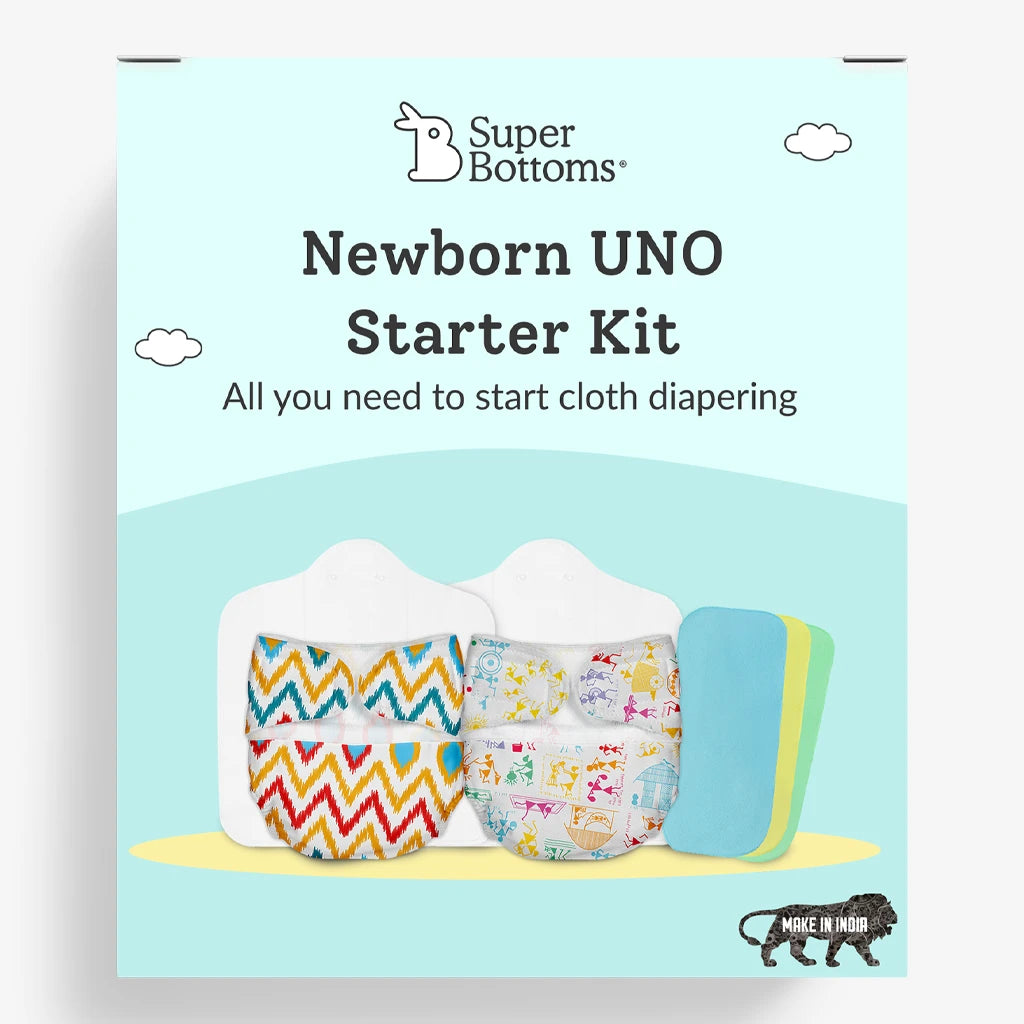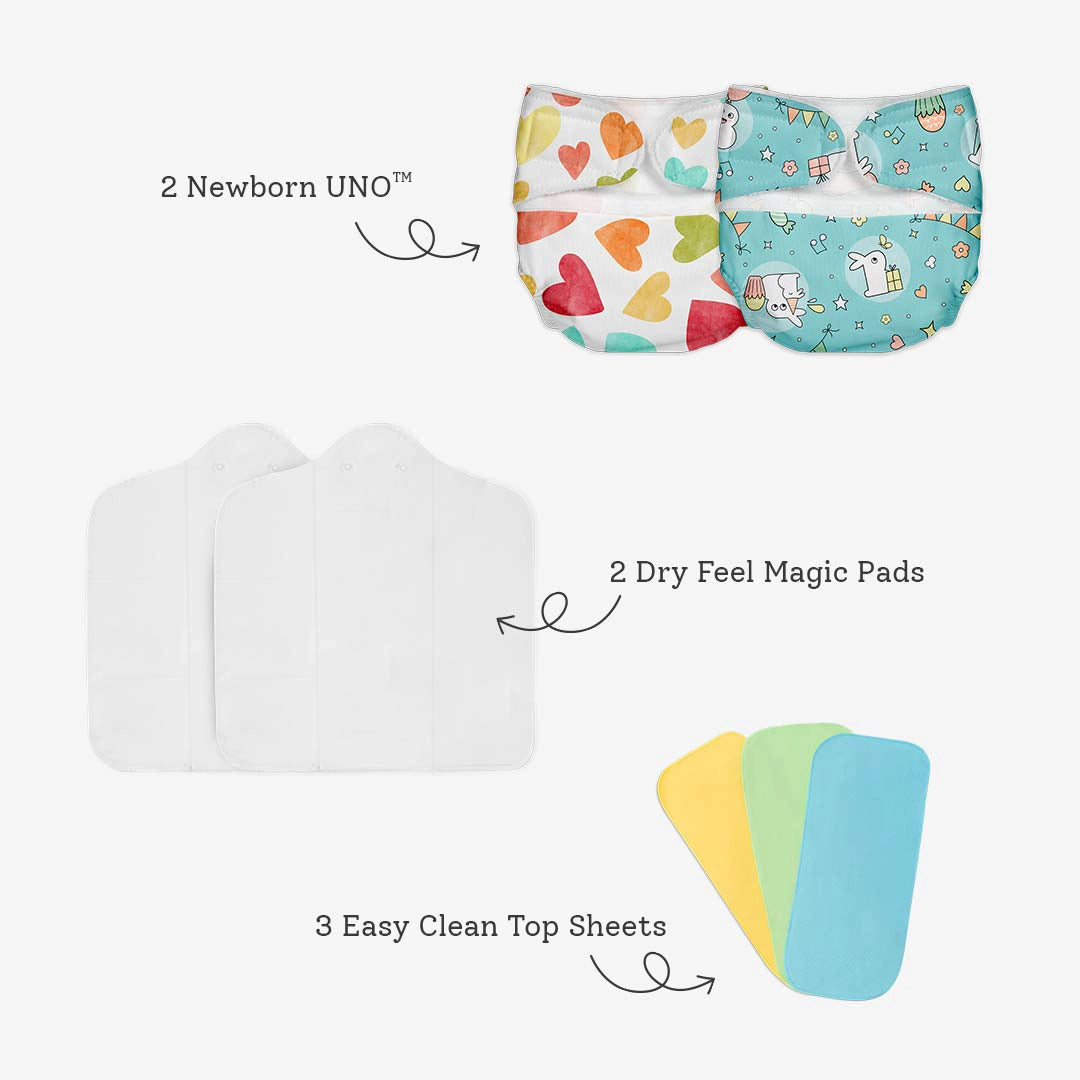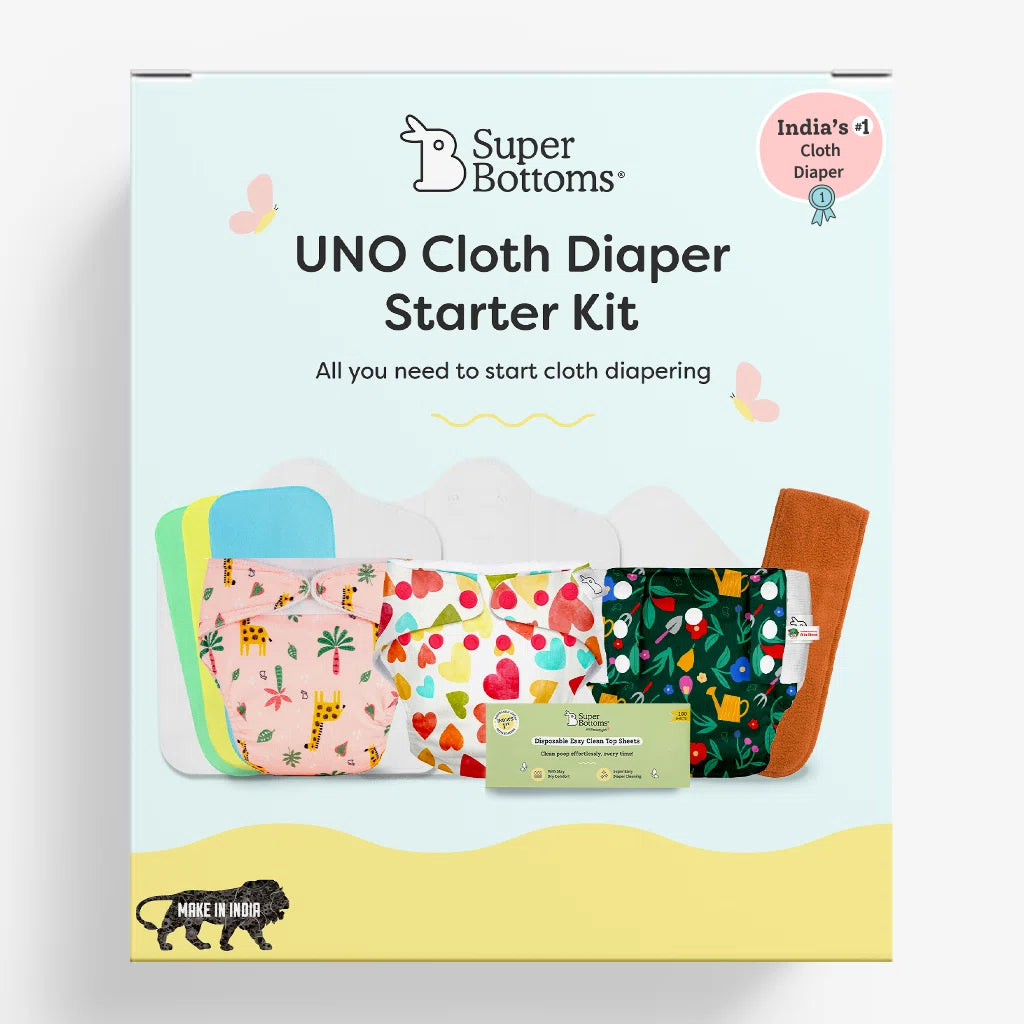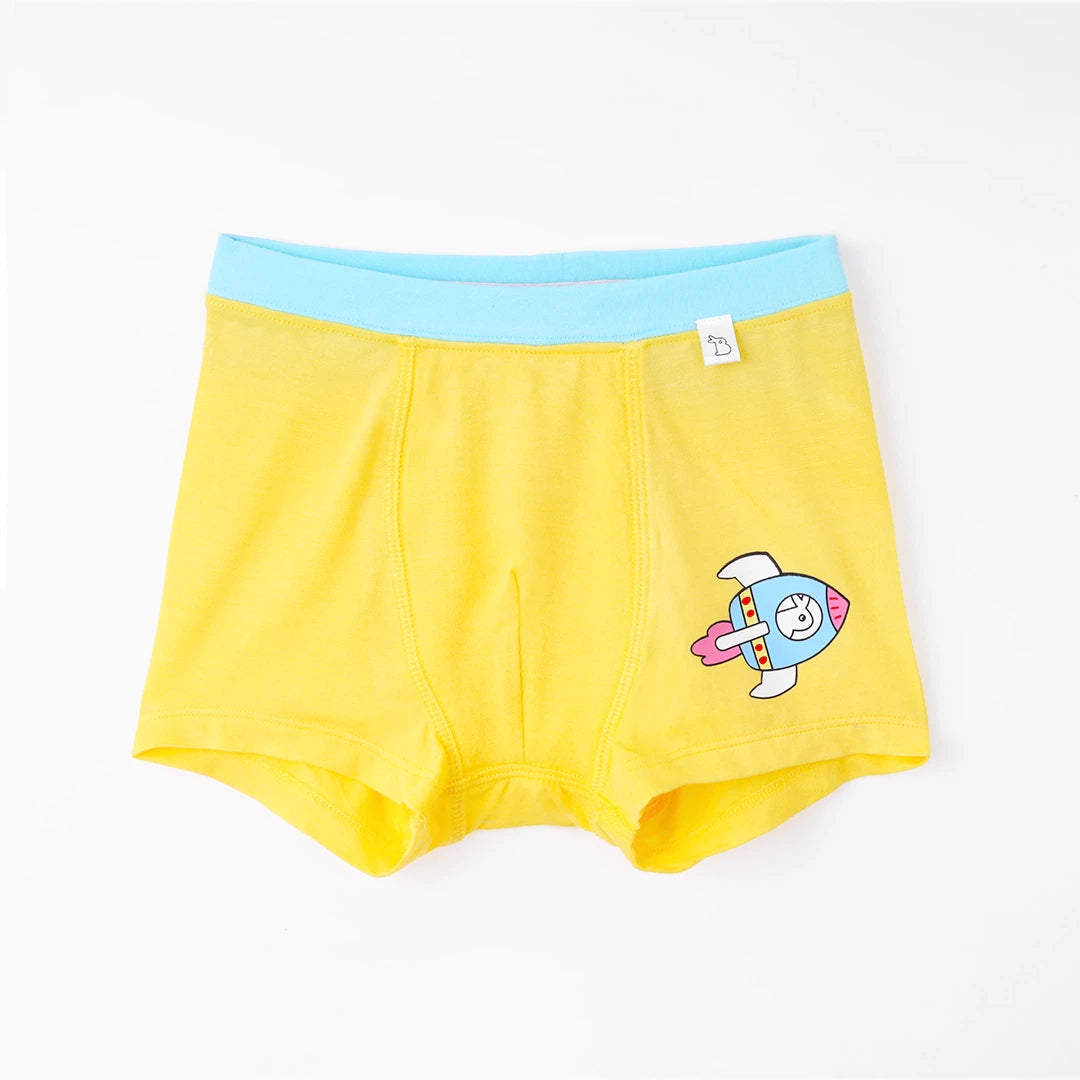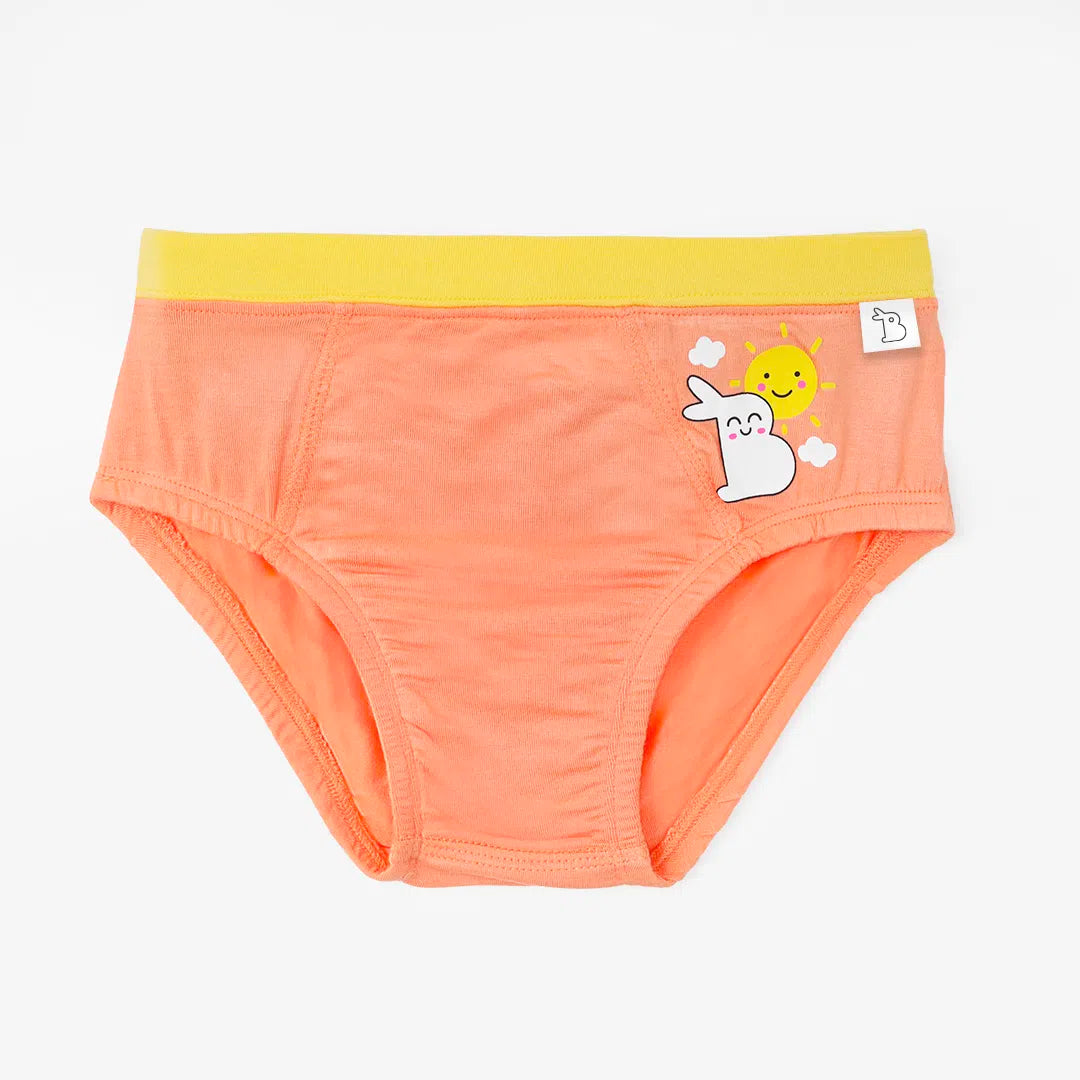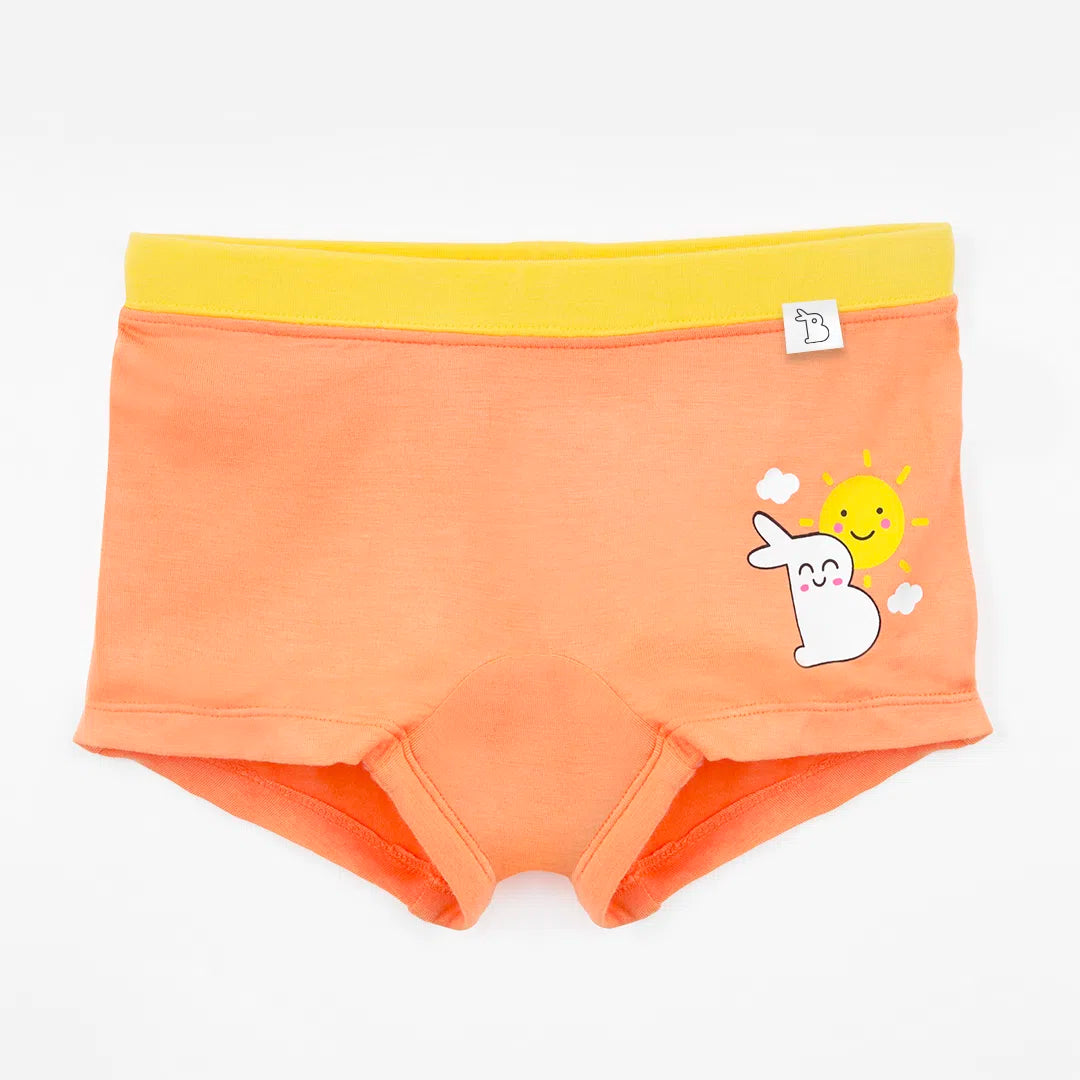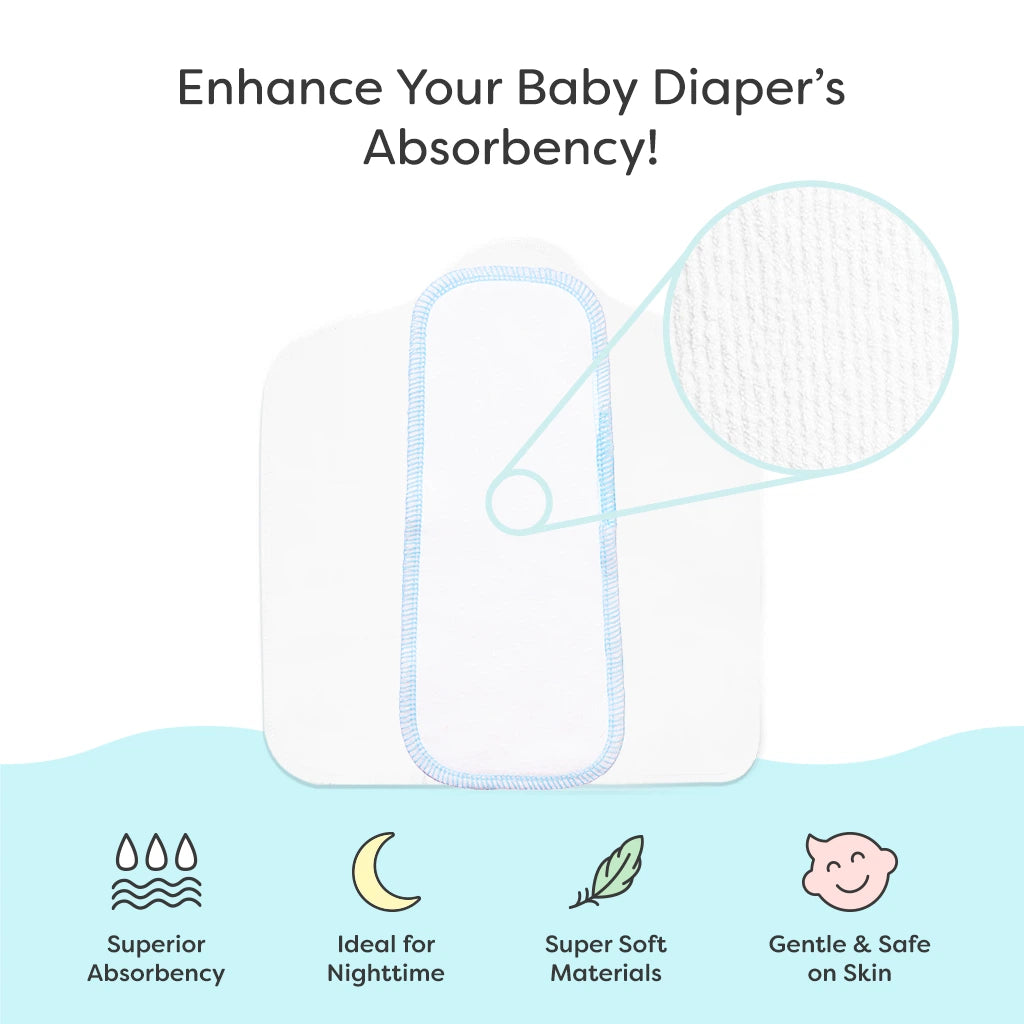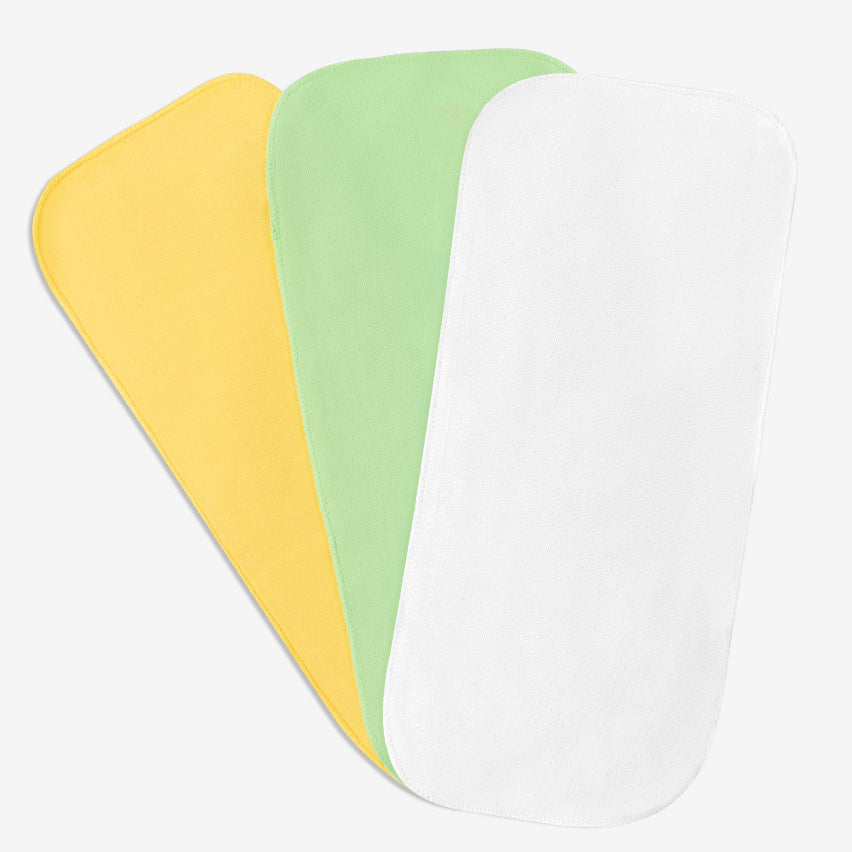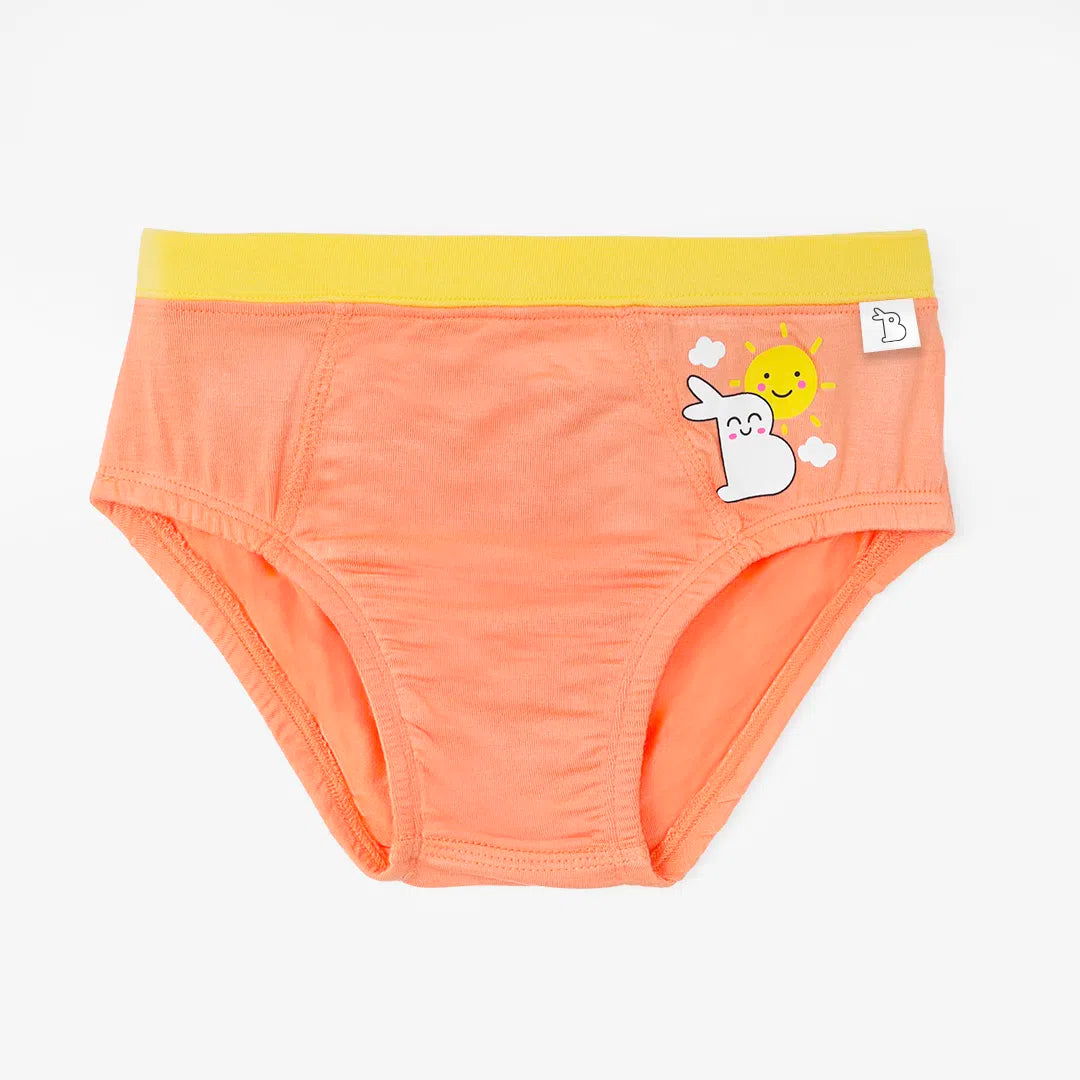• Introduction
• What is Baby Sign Language?
• Benefits of Baby Sign Language
• Teaching Babies Sign Language Pros and Cons
• Why Do Parents Use Baby Sign Language?
• When To Start Baby Sign Language?
• Simple Sign Language for Babies
• 3 Must-Have Baby Essentials To Make Your Life Easy
• Message From SuperBottoms
Effective communication between caregivers and their little ones is a vital building block for understanding and connection in the beautiful journey of parenthood. Baby sign language, often called "simple sign language for babies," has emerged as a promising method to facilitate this early communication.
By introducing a set of essential signs, parents aim to bridge the gap between their preverbal infants and themselves, enabling them to express their needs, feelings, and desires with their tiny hands.
While baby sign language has gained popularity for its potential benefits, such as fostering early communication and reducing frustration in babies, it's not without its share of sceptics. This blog by SuperBottoms explores what baby sign language is by delving into the advantages and disadvantages, and the pros and cons of teaching babies sign language.
Continue reading as we will also uncover how this innovative approach can empower both parents and their infants, all while considering the potential drawbacks and misconceptions that come with it. So, whether you're a curious parent-to-be or interested in early child development, join us on this enlightening journey through baby sign language.
What is Baby Sign Language?
Baby sign language, also called "baby signing," teaches infants to communicate using a simplified system of basic gestures or signs. It allows babies to express their needs, emotions, and desires before they can articulate them verbally.
This innovative approach has gained popularity for its potential benefits, including reducing frustration in babies and enhancing the parent-child bond. However, it has its share of misconceptions and criticisms, particularly regarding concerns about delayed speech development.
In this blog, we'll explore the pros and cons of teaching babies sign language and offer practical insights into simple sign language for babies, helping parents make informed decisions about incorporating this valuable tool into their child's early communication journey.
Benefits of Baby Sign Language
Here are some benefits of baby sign language:
1. Enhanced Early Communication: Baby sign language enables preverbal infants to express their needs and emotions, reducing frustration and strengthening the parent-child bond. Basic signs like "more," "milk," or "sleep" help babies communicate effectively.
2. Early Cognitive Development: Using sign language can boost cognitive growth by engaging babies in symbolic language. It promotes problem-solving skills and an understanding of cause and effect, helping them reach language milestones on time or early.
3. Reduced Frustration and Emotional Development: Baby sign language reduces infant frustration by allowing them to communicate their needs. This lowers stress, fosters emotional development, and enhances social interactions, promoting emotional intelligence and a harmonious parent-child relationship.
Teaching Babies Sign Language Pros and Cons
Teaching baby sign language can be an effective way to enhance communication with your infant. To get started, focus on a few simple signs that are relevant to your baby's daily life, such as "more," "milk," or "diaper." Consistency is critical; use these signs whenever the situation arises and pair them with spoken words. This repetition helps your baby connect the signal with its meaning. Keep the experience engaging by using signs during playtime, mealtime, and other routines.
While some concerns exist about potential disadvantages, such as delayed speech, research generally supports the benefits of early communication through baby sign language. By gradually and consistently introducing signs, you can empower your baby to express their needs and emotions effectively while promoting overall development.
Why Do Parents Use Baby Sign Language?
Parents use baby sign language to enhance early communication, allowing preverbal infants to express their needs and emotions, which reduces frustration for both the baby and the parents. This early form of communication fosters a stronger parent-child bond. It promotes cognitive development by engaging babies in symbolic language and improving memory, problem-solving skills, and understanding of cause-and-effect relationships.
Additionally, baby sign language helps improve emotional intelligence by enabling babies to understand social interactions and emotional expressions better. Active learning and positive reinforcement lead to a happier, more content baby and a more fulfilling and harmonious parenting experience.
When To Start Baby Sign Language?
Parents can start introducing baby sign language when their baby is around 6-8 months old. At this age, infants typically develop motor skills and cognitive ability to understand and mimic gestures. Starting early allows babies to gradually learn and use signs, helping them communicate their needs and emotions before they can speak.
Consistency is vital, so incorporate signs into daily routines such as feeding, bathing, and playtime. While every baby is different, many start using simple signs effectively by 9-12 months, reducing frustration and enhancing parent-child bonding.
How To Teach Baby Sign Language?
Teaching baby sign language requires patience, consistency, and creativity. Here's a step-by-step guide to get started:
1. Start Early: Begin introducing signs when your baby is around 6-8 months old, as they start to understand and mimic gestures.
2. Choose Key Signs: Focus on simple, relevant signs for everyday needs like "milk," "more," "eat," "drink," "sleep," and "all done."
3. Be Consistent: Use the chosen signs consistently in context. Say the word aloud while making the sign, reinforcing the association between the sign and its meaning.
4. Repeat Frequently: During routine activities like feeding, changing diapers, and playtime, repeat signs often throughout the day.
5. Use Visual Aids: Books, flashcards, and videos featuring baby sign language reinforce learning and provide visual cues.
6. Make it Fun: Incorporate signing into games, songs, and interactive activities to keep your baby engaged and interested.
7. Encourage Imitation: Encourage your baby to imitate signs by signing alongside them and praising their efforts.
8. Be Patient: Every baby learns at their own pace, so be patient and consistent in your teaching approach. Celebrate small successes and progress.
9. Stay Positive: Maintain a positive and encouraging attitude towards your baby's attempts at signing, even if they are imperfect. The goal is effective communication, not perfection.
10. Model Signing: Let your baby see you using signs in everyday interactions with them and others, reinforcing the importance and relevance of signing.
By following these steps and incorporating baby sign language into your daily routine, you can effectively teach your baby to communicate through signs, promote early language development, and enhance your bond with them.
|
Limited Time Offers + Special Gift Sets! Now or never Super SALE is live on the SuperBottoms website! Take advantage of unbeatable value deals on our UNO Cloth Diapers, Baby Essentials, and more. Looking for the perfect present for a newborn or a toddler? Explore our thoughtfully curated Gift Sets & Combos — safe, skin-friendly, and oh-so-cute! A bundle of love for little ones and a delight for parents. HURRY — Deals and Gift Packs are live only till stocks last. Don’t miss the chance to stock up and share the joy! |
Simple Sign Language for Babies
Introducing simple sign language to babies is a beautiful way to boost early communication. While concerns about potential disadvantages, such as delayed speech, have been raised, the benefits often outweigh the drawbacks. Here are a few basic signs that can make a big difference:
1. "More": This sign, made by bringing your fingertips together, can help babies express their desire for more food, toys, or any activity they enjoy.
2. "Milk": Create this sign by squeezing an imaginary udder, resembling milking a cow. It's a handy way for infants to let you know they're hungry or thirsty.
3. "All Done": Extend your palms and shake them to signify "all done" or "finished." This helps babies convey when they've had enough of something.
4. "Help": For this sign, raise your hand, open your palm, and make a beckoning motion. Babies can use it to seek assistance or express frustration.
5. "Please" and "Thank You": Teaching polite signs like "please" and "thank you" encourages good manners and gratitude from a young age.
By incorporating these simple signs into your daily interactions, you can create a smoother, more enriching communication experience with your baby. This will ultimately strengthen your parent-child bond and reduce frustration for both parties. While there are potential disadvantages, many parents find that the advantages of baby sign language, especially for early communication, far outweigh any concerns.
3 Must-Have Baby Essentials To Make Your Life Easy
SuperBottoms FreeSize UNO:
1. Features: SnapEasy System, Super DryFeel layer, reusable over 300 times, adjustable sizing for 3 months to 3 years.
2. Benefits: Eco-friendly, cost-effective, leak-free, snug fit.
SuperBottoms DryFeel Langot:
1. Features: Super DryFeel layer, three layers of 100% cotton padding, adjustable sizing, gentle elastics, semi-waterproof.
2. Benefits: Excellent absorbency, comfortable fit, combines traditional and modern diapering.
SuperBottoms BASIC Diaper Changing Mat:
1. Features: Extra absorbent, Cotton Fleece fabric, SuperDryFeel™ layer, lightweight, washable, and reusable.
2. Benefits: Keeps sleeping and play areas dry, suitable for all seasons, soft on skin, versatile use.
Investing in these SuperBottoms essentials ensures your baby's comfort and simplifies your parenting routine while being eco-friendly and cost-effective.
Key Takeaways
1. Baby sign language enhances early communication between parents and infants. While concerns about potential disadvantages, such as delayed speech development, exist, the benefits, including reduced frustration and cognitive growth, are substantial.
2. Teaching simple sign language to babies can empower them to express their needs and emotions effectively, ultimately strengthening the parent-child bond.
3. As with any parenting approach, weighing the pros and cons and deciding what works best for your family is essential. When introduced thoughtfully, baby sign language can be a powerful way to improve understanding and foster a deeper connection with your little one.
Frequently Asked Questions (FAQs):
Q1. Why do parents use baby sign language?
Ans: Parents use baby sign language to improve early communication, reduce frustration, promote cognitive and emotional development, and strengthen the parent-child bond, leading to a happier, more content baby.
Q2. When to start baby sign language?
Ans: You can start introducing simple sign language to your baby at six months. However, it is essential to be patient and choose signs relevant to their daily experiences.
Q3. How to teach baby sign language?
Ans: To teach baby sign language, start around 6-8 months, use consistent and simple signs during daily routines, repeat frequently, and be patient. Encourage imitation and celebrate progress.
Message from SuperBottoms
Hi there, new parents! SuperBottoms brings you doctor-recommended cloth diapers — the best rash-free diapering solution for your baby’s sensitive and delicate skin. Unlike disposable diapers loaded with chemicals, our newborn cloth diapers, when used and washed properly, can help eliminate the risk of diaper rashes. SuperBottoms offers a wide range of safe, skin-friendly essentials for the whole family — including Reusable Cloth Diapers, Diaper Pants, DryFeel langots for diaper-free time, Padded Underwear for potty training, SuperSoft Underwear for everyday comfort, Joggers for playful days, and Period Underwear for women. Not just for everyday use, SuperBottoms products also make the best gifting choice for babies — thoughtful, eco-friendly, practical, and loved by parents. Now available on Amazon, Myntra, Flipkart, FirstCry, Zepto, Swiggy and Blinkit.
Reference Links
1. Enhancing Early Communication through Infant Sign Training
2. Sign Language for Toddlers: Is It Beneficial?









